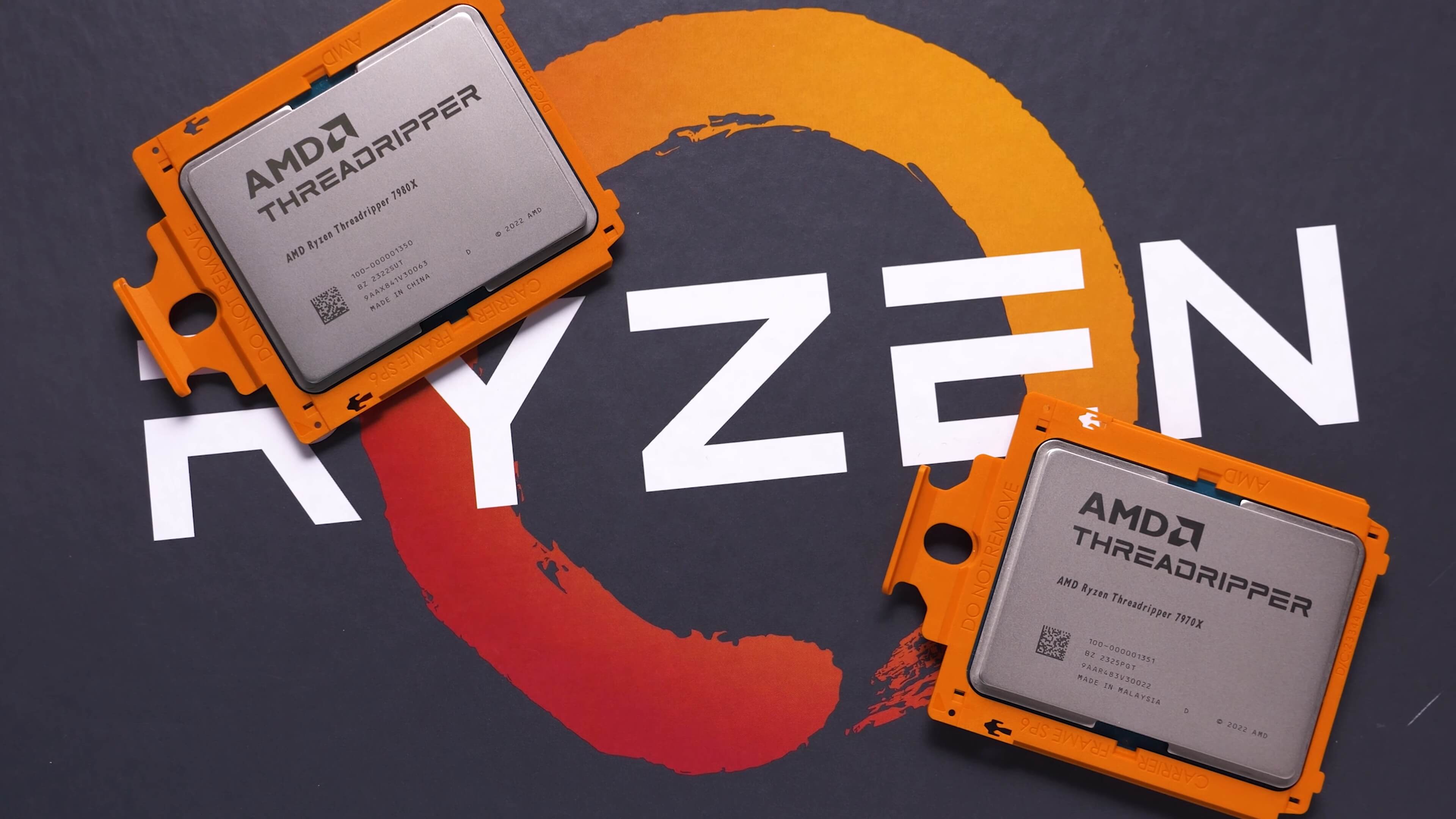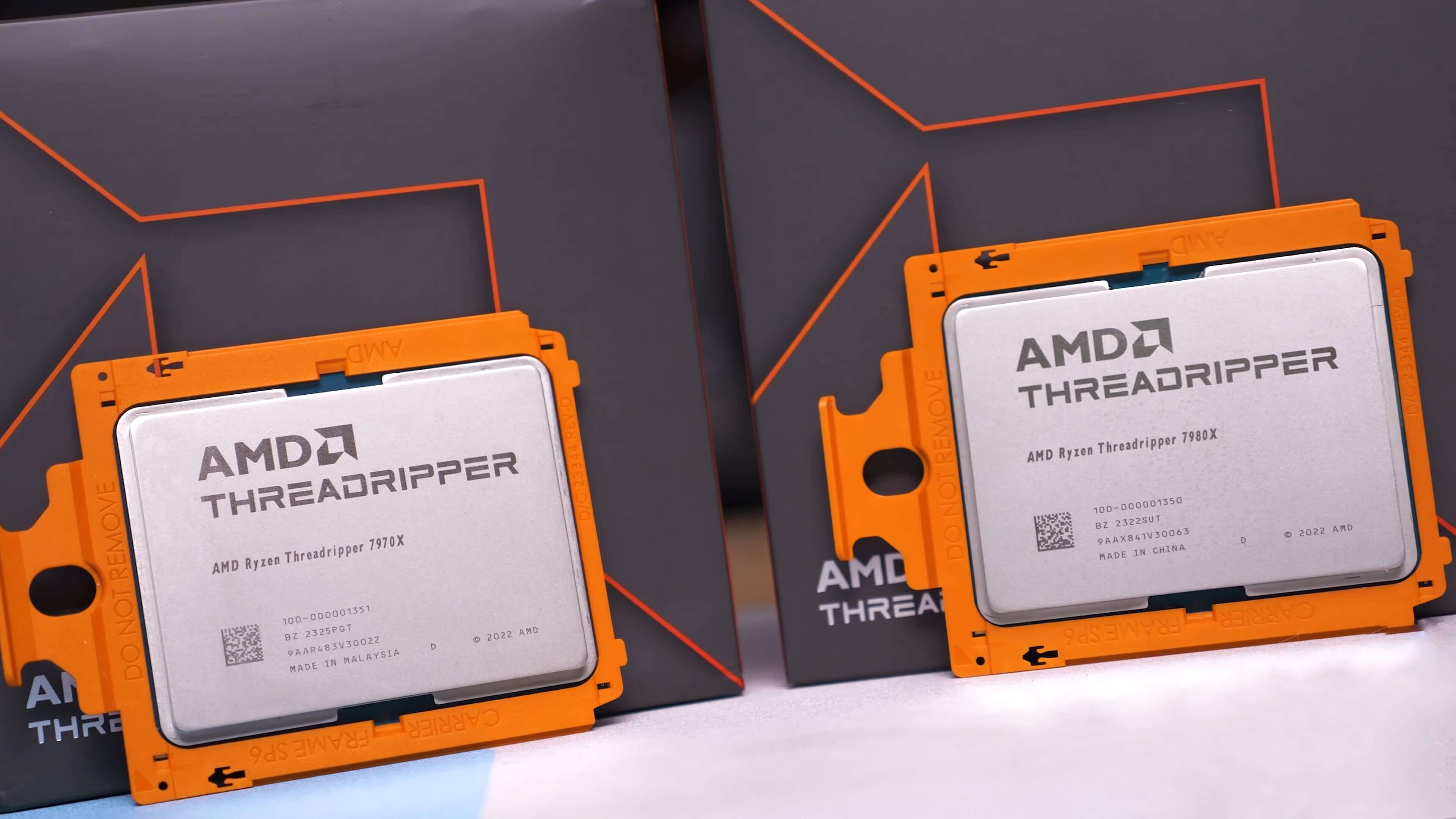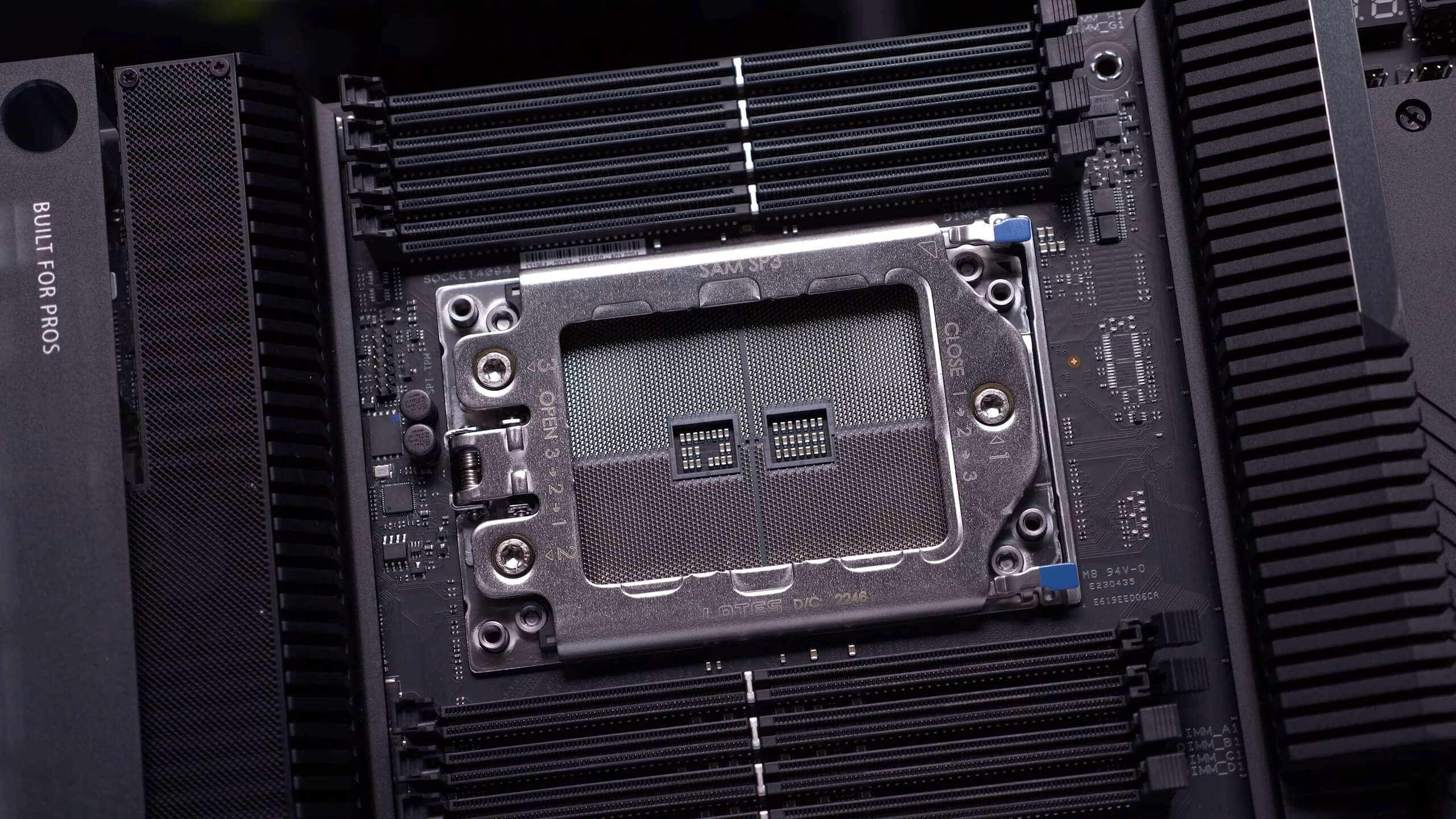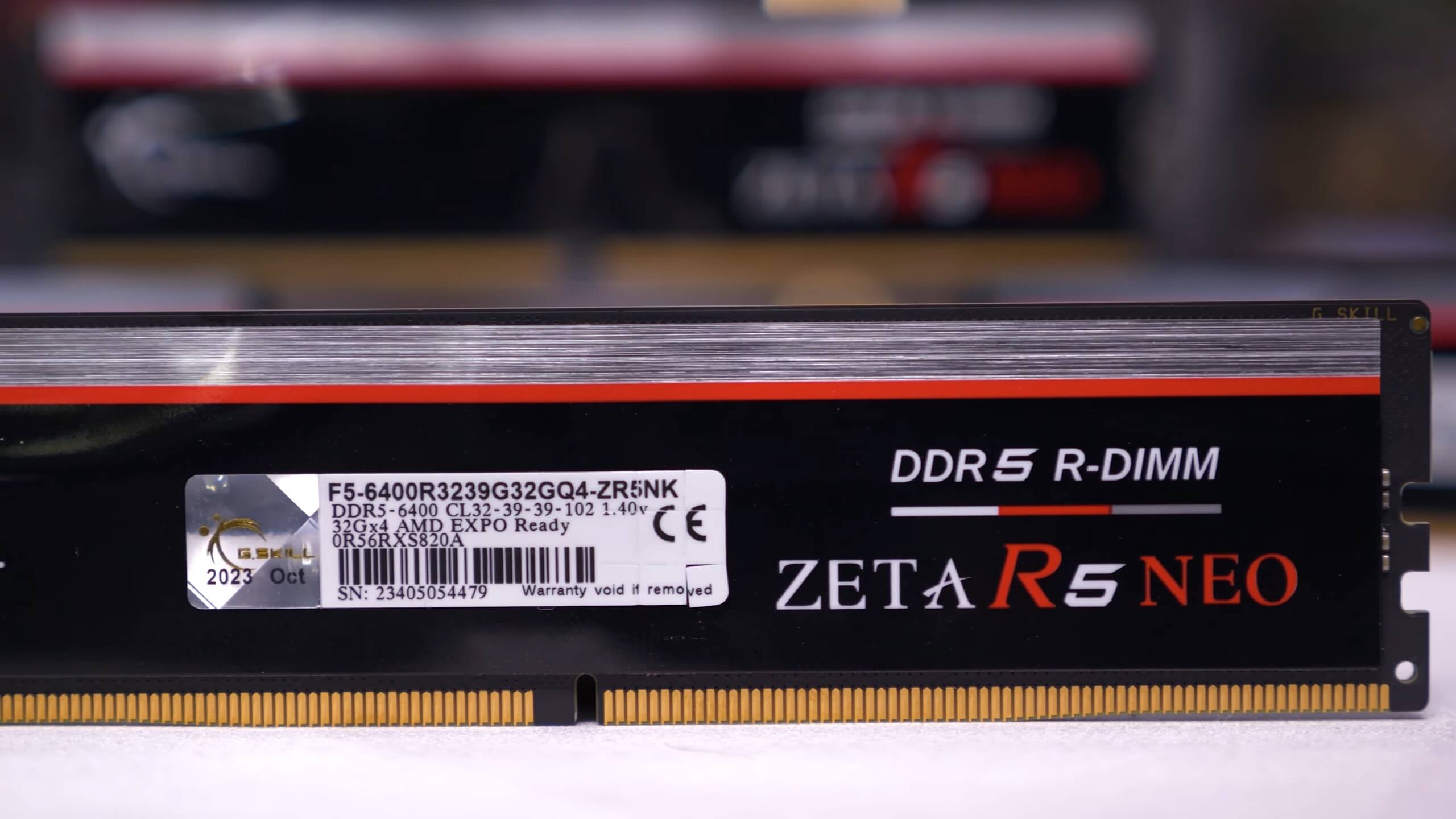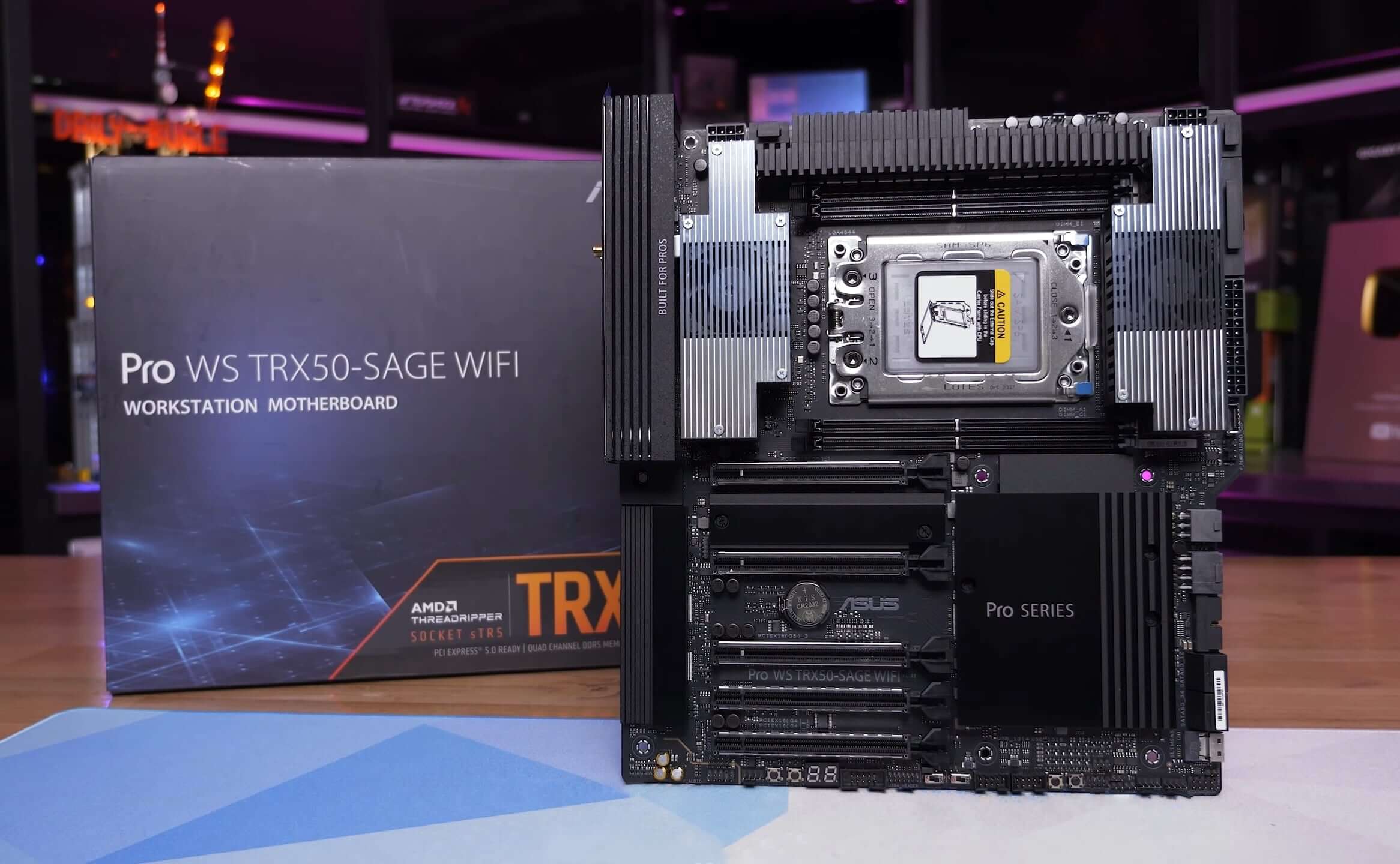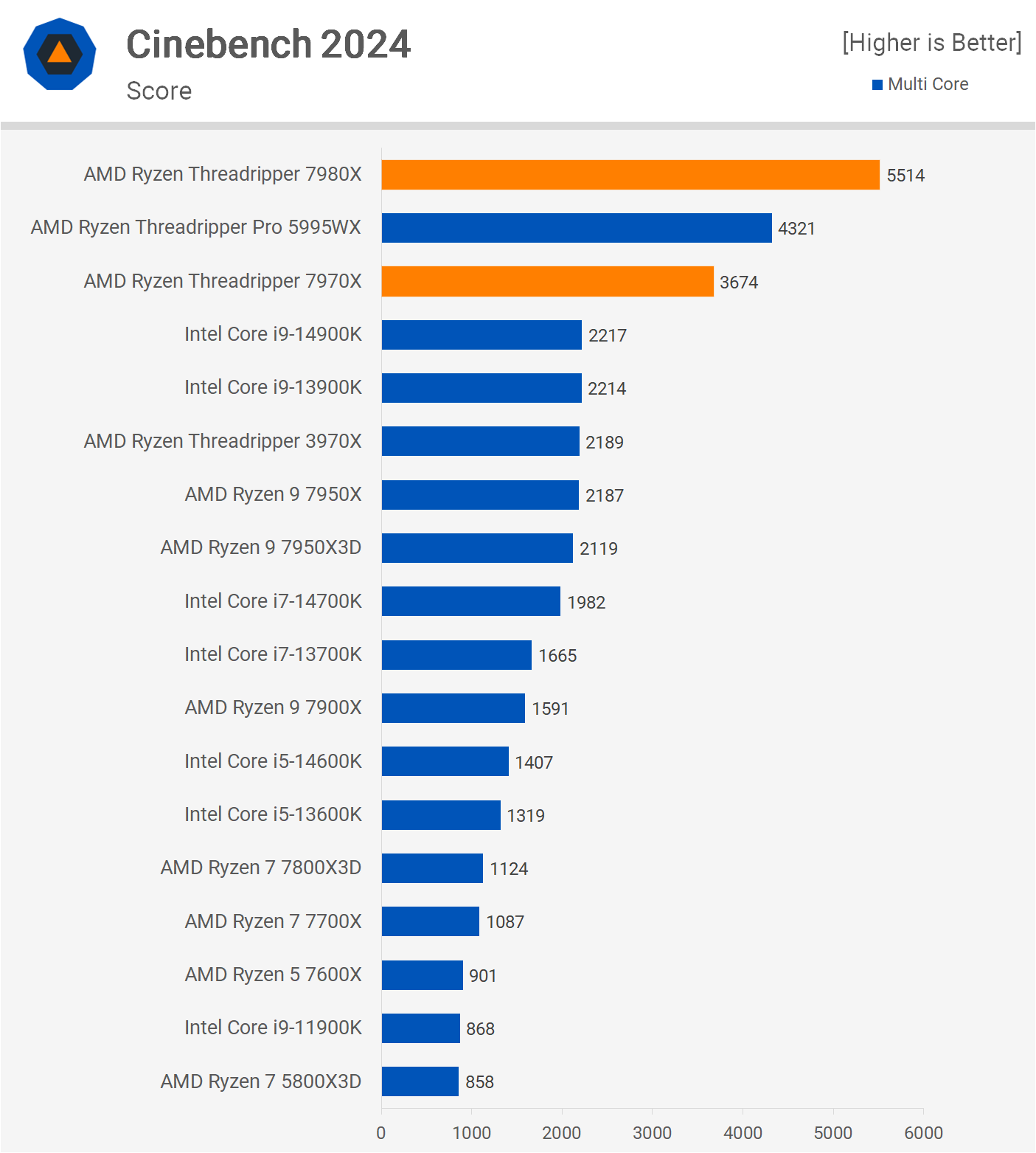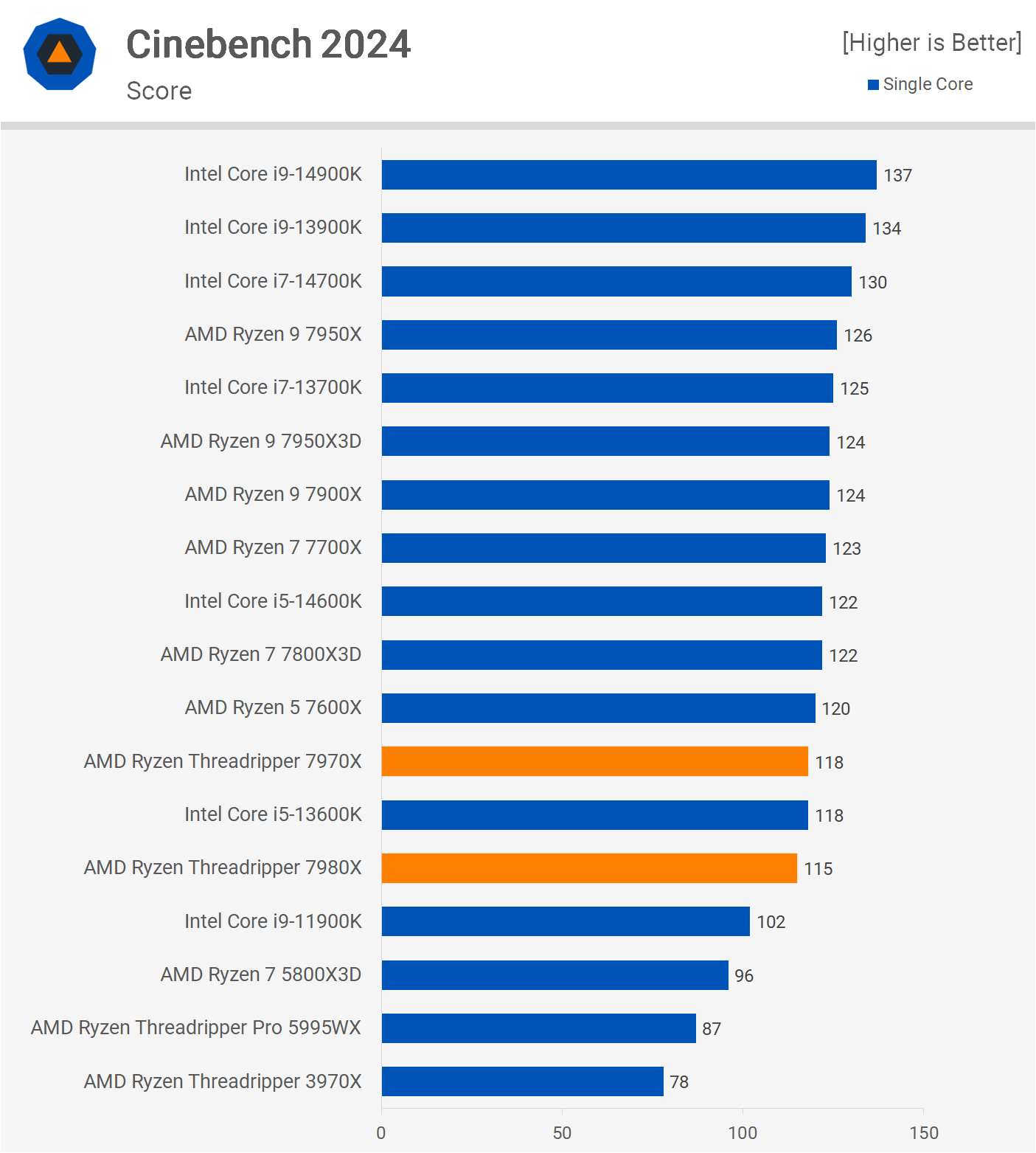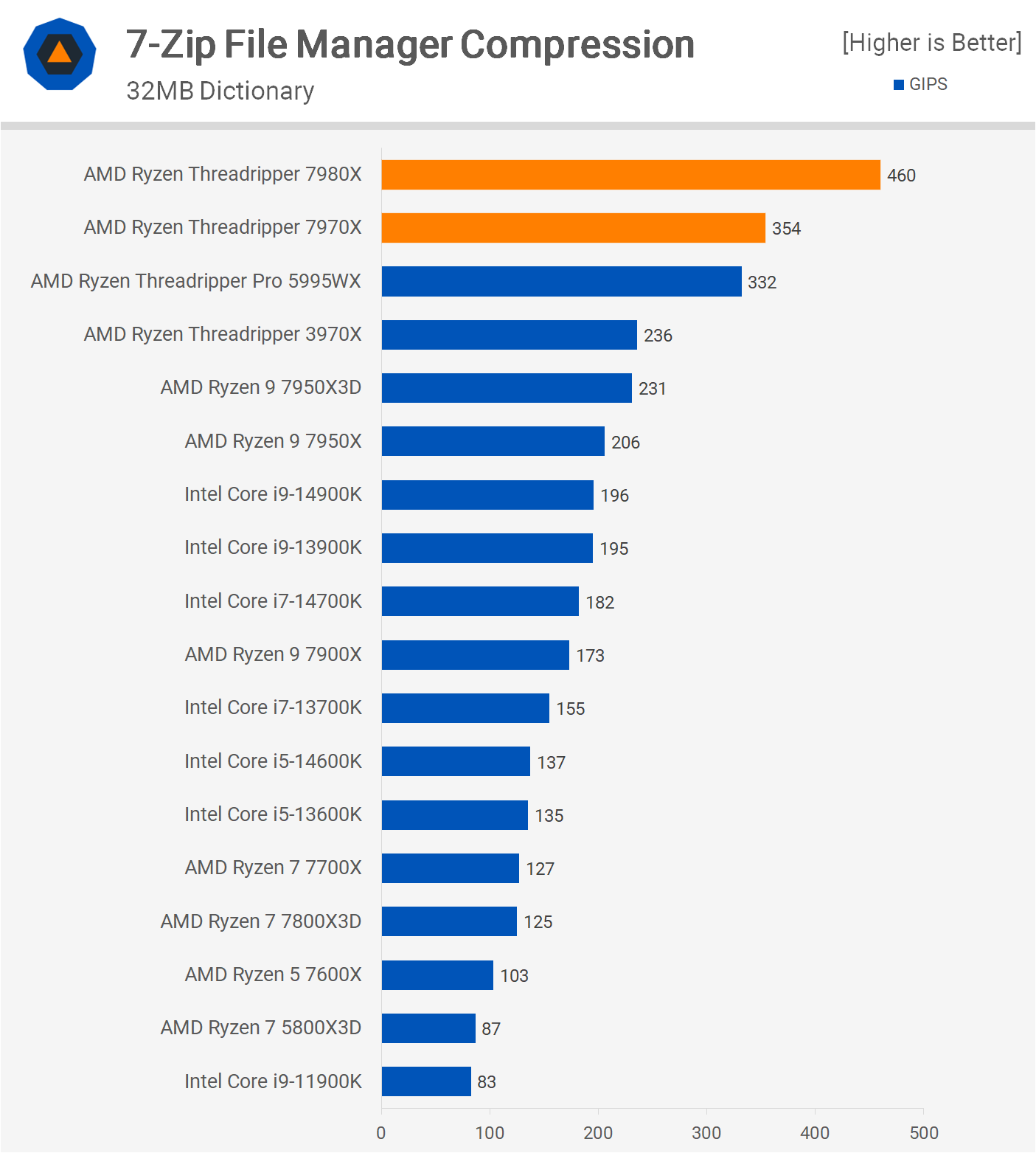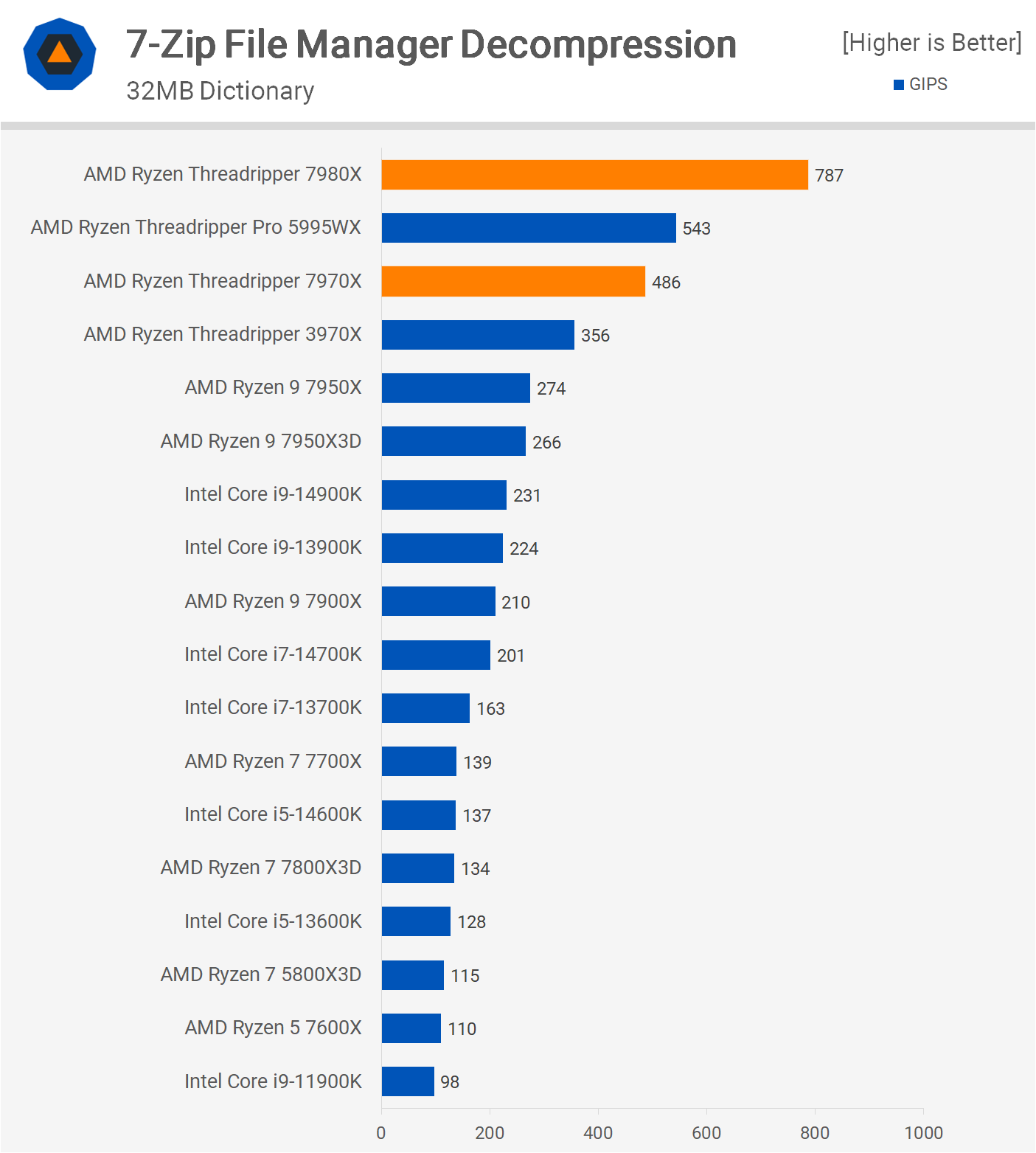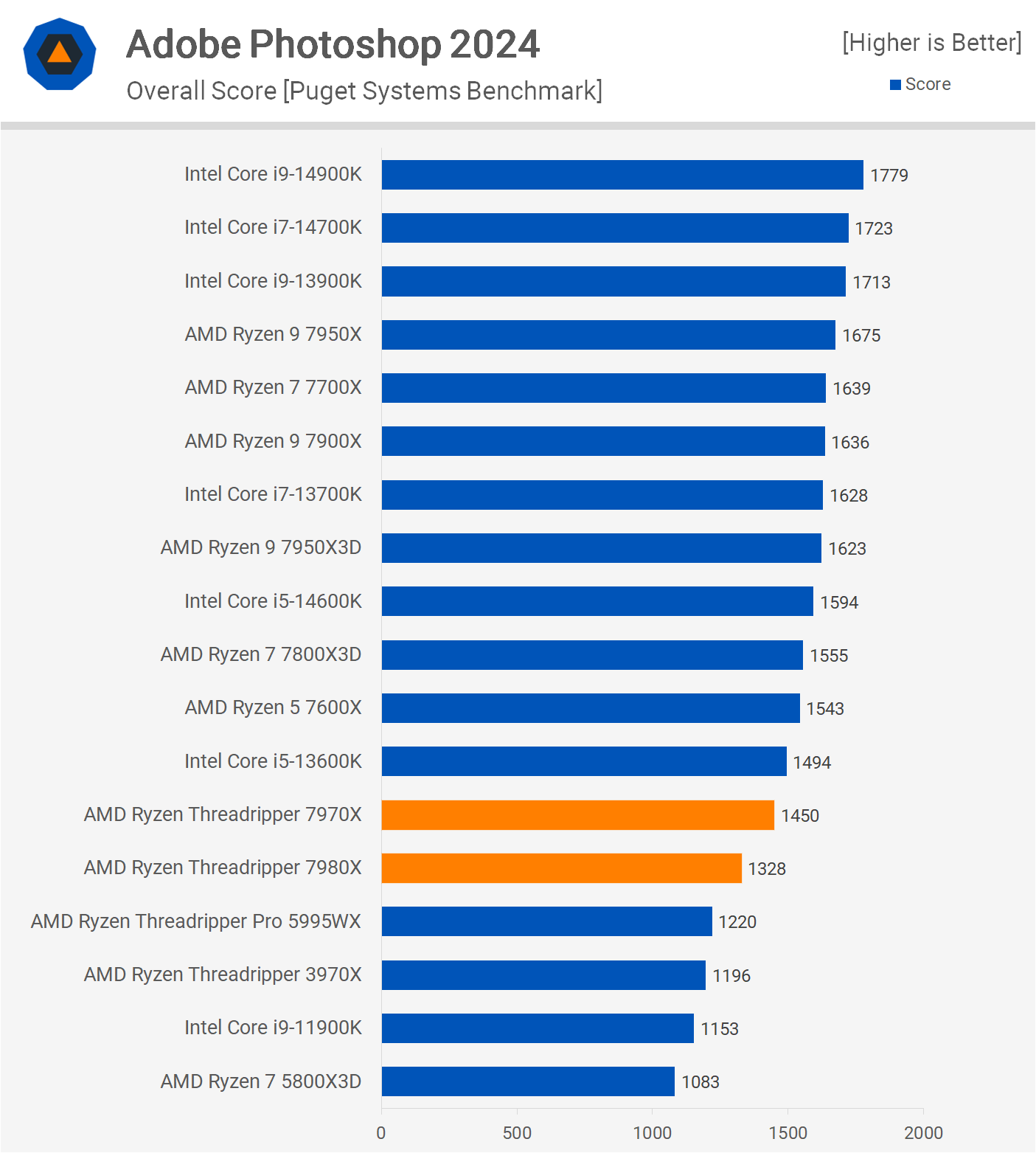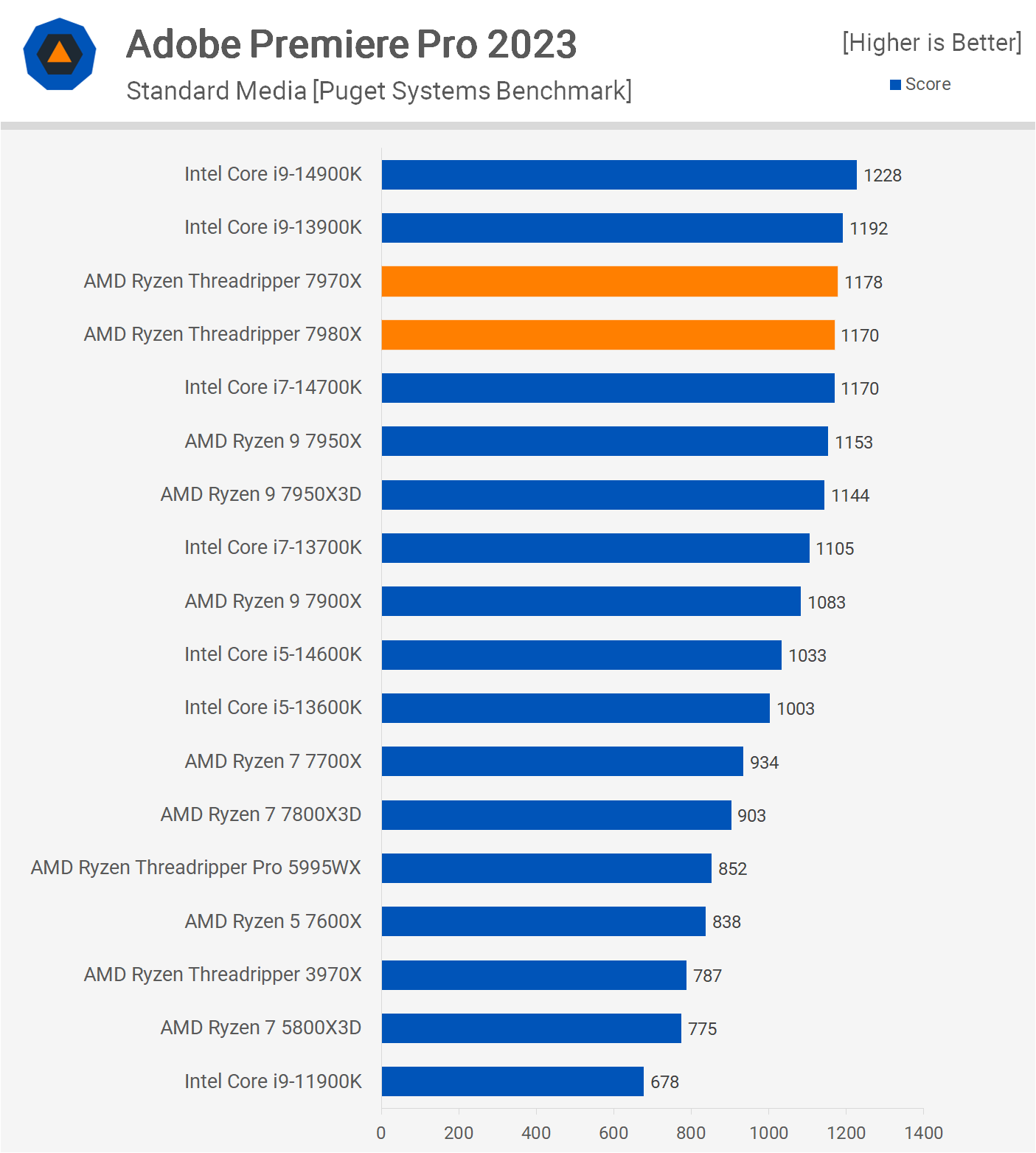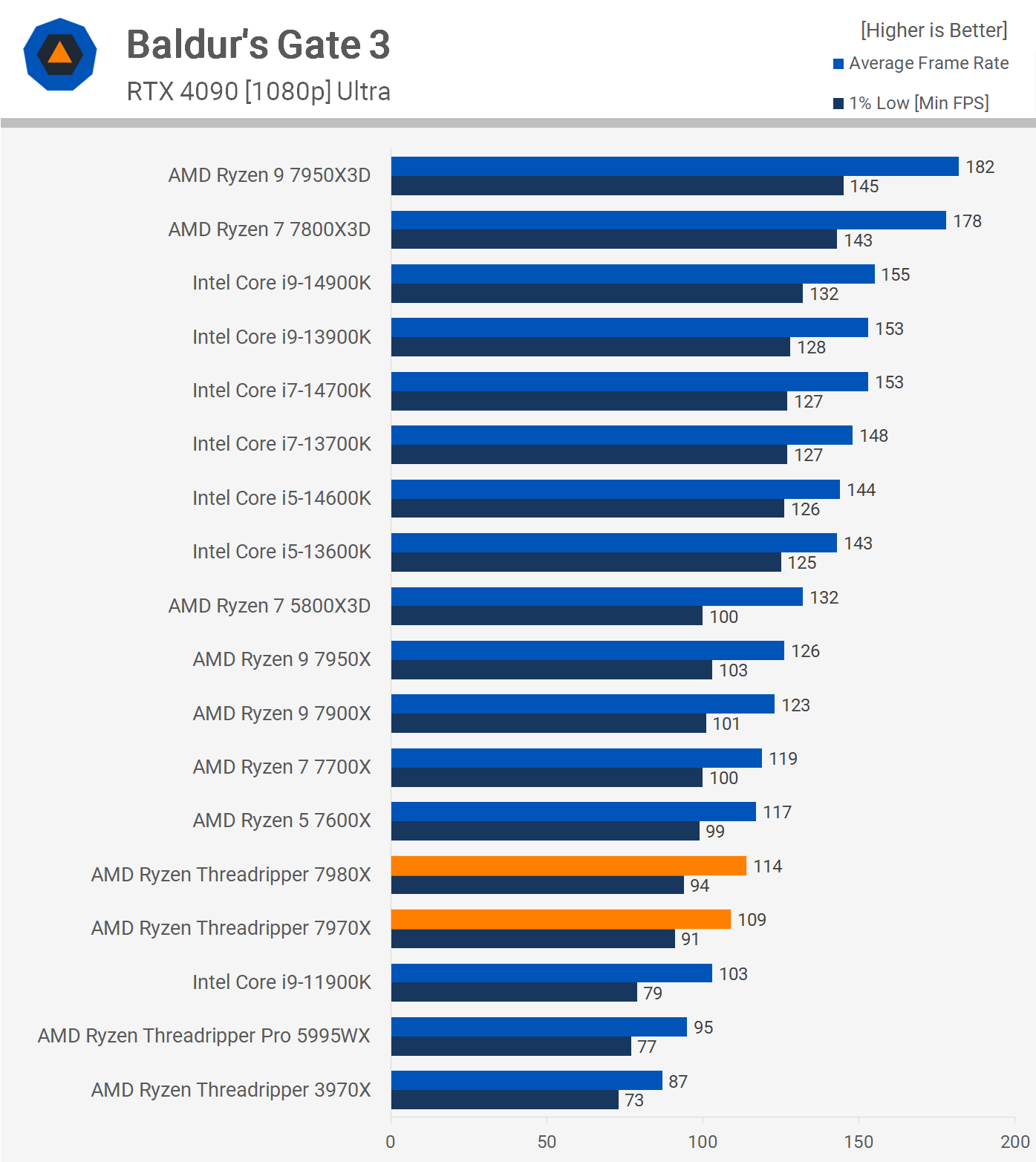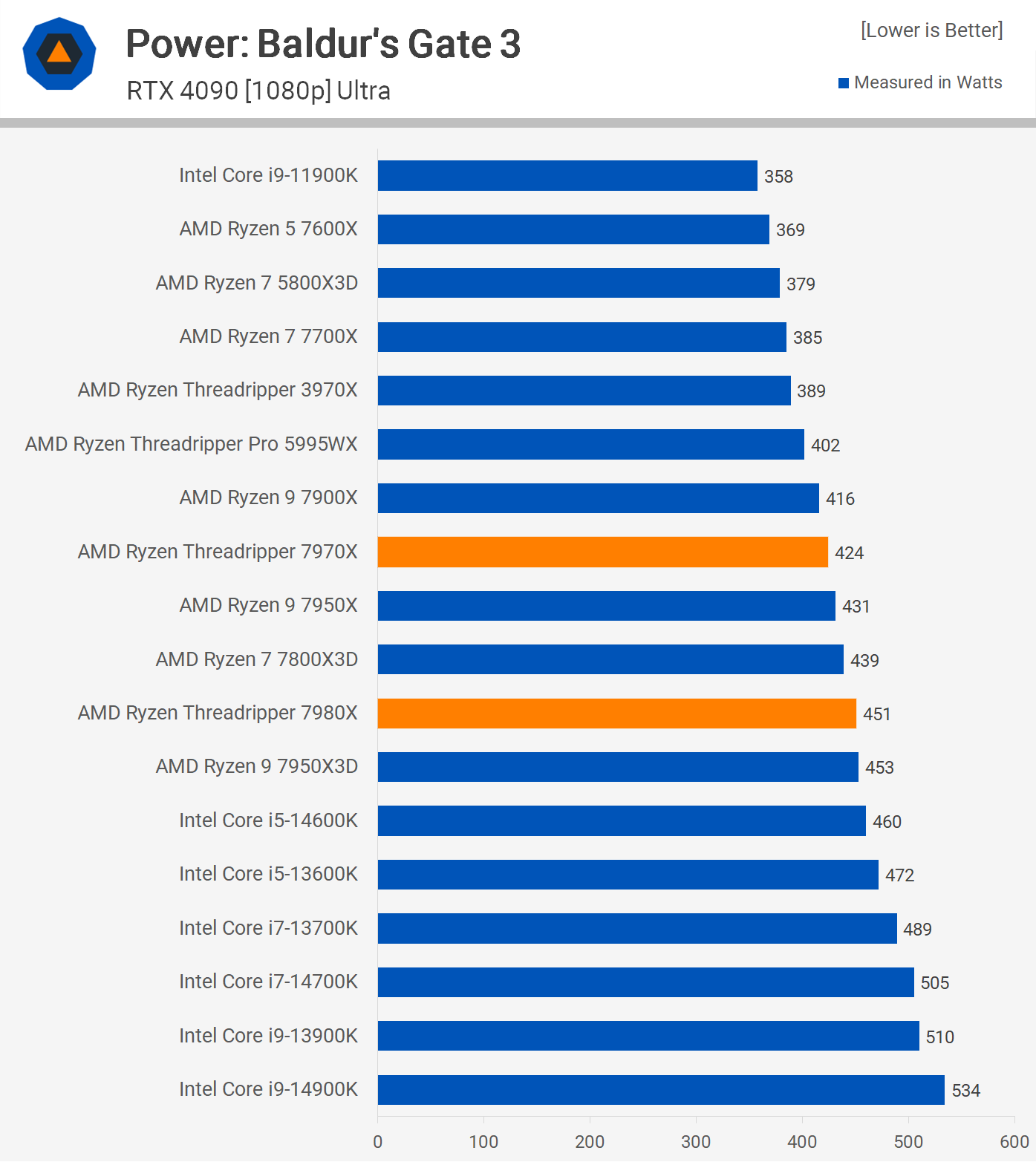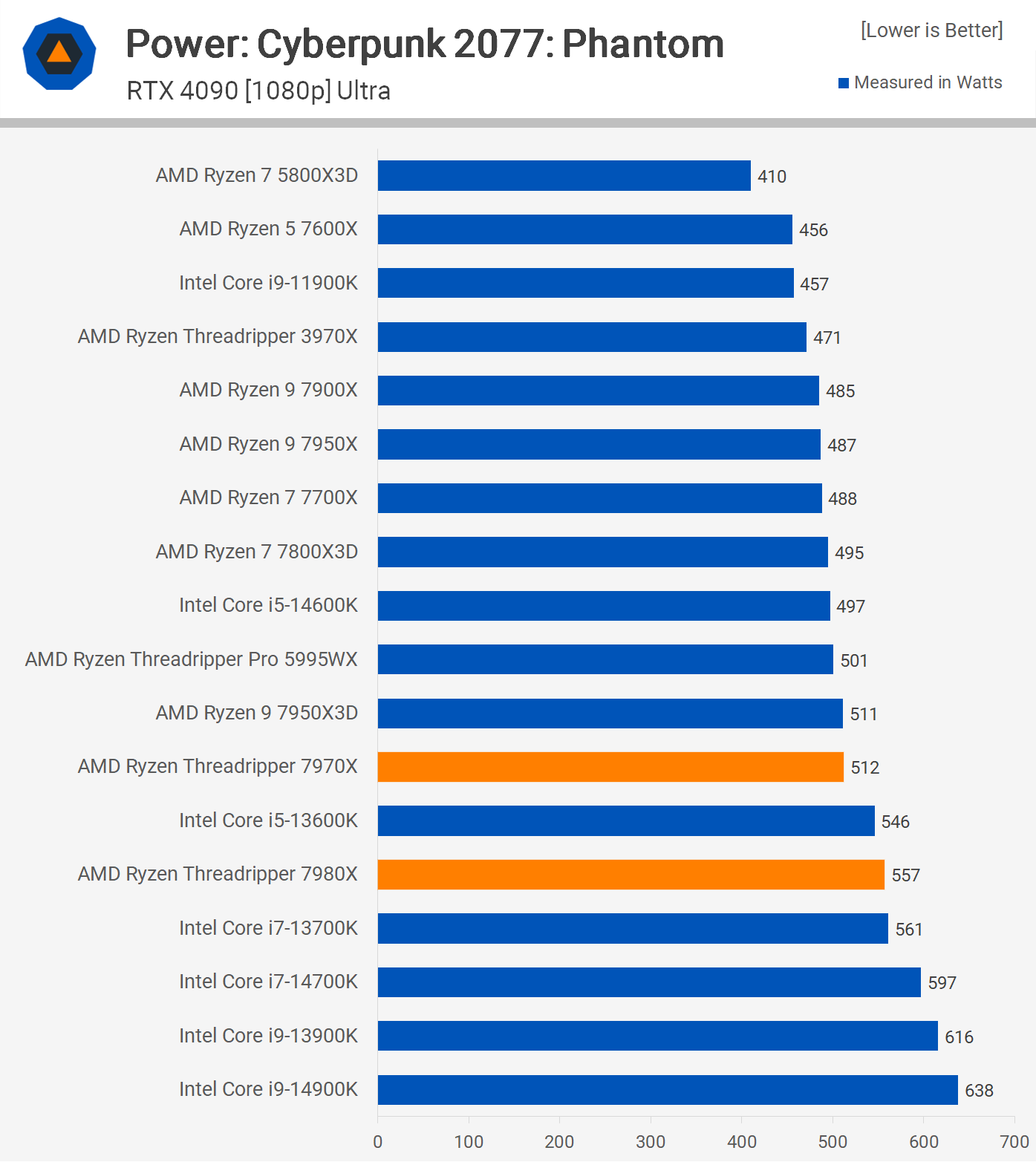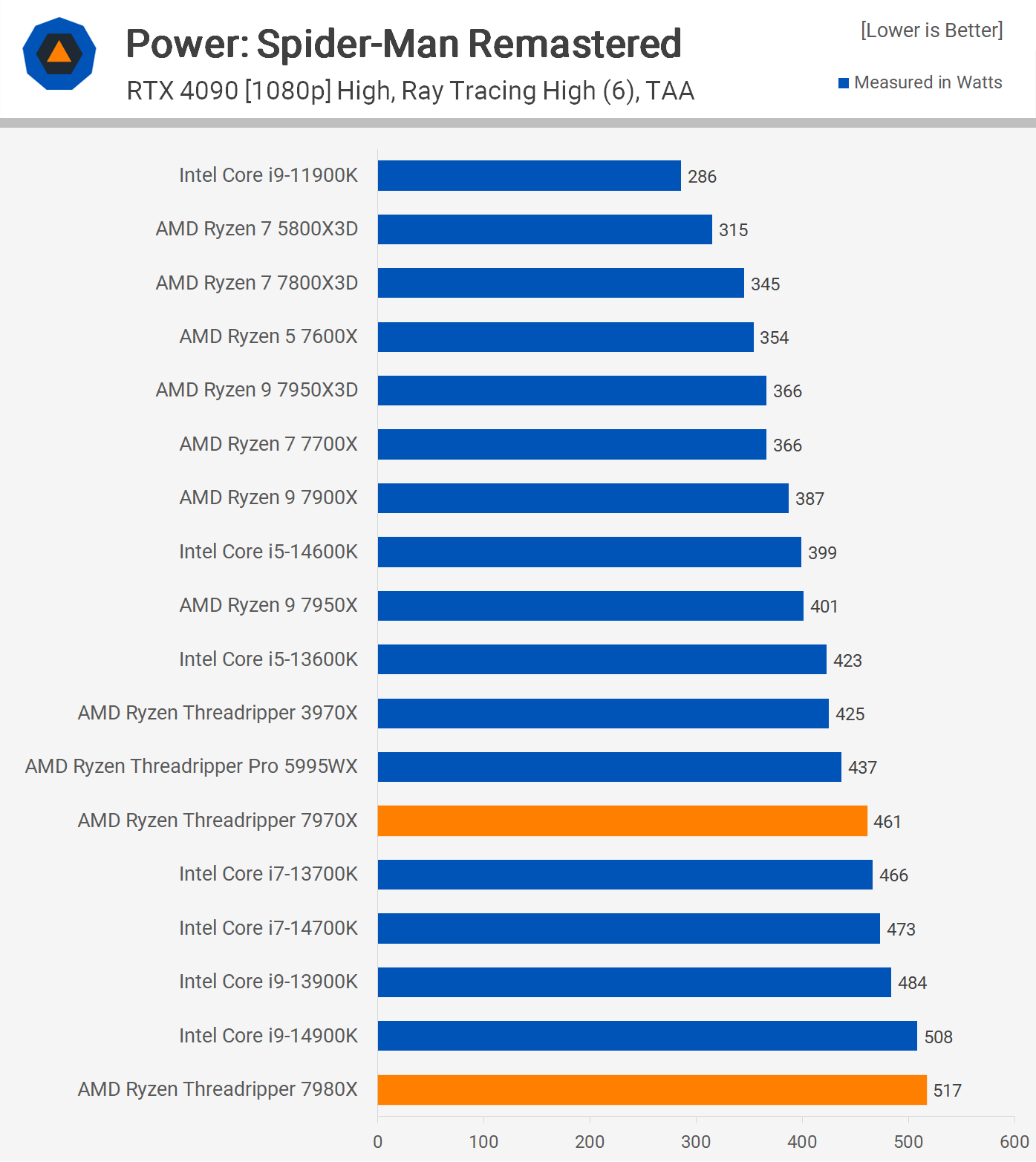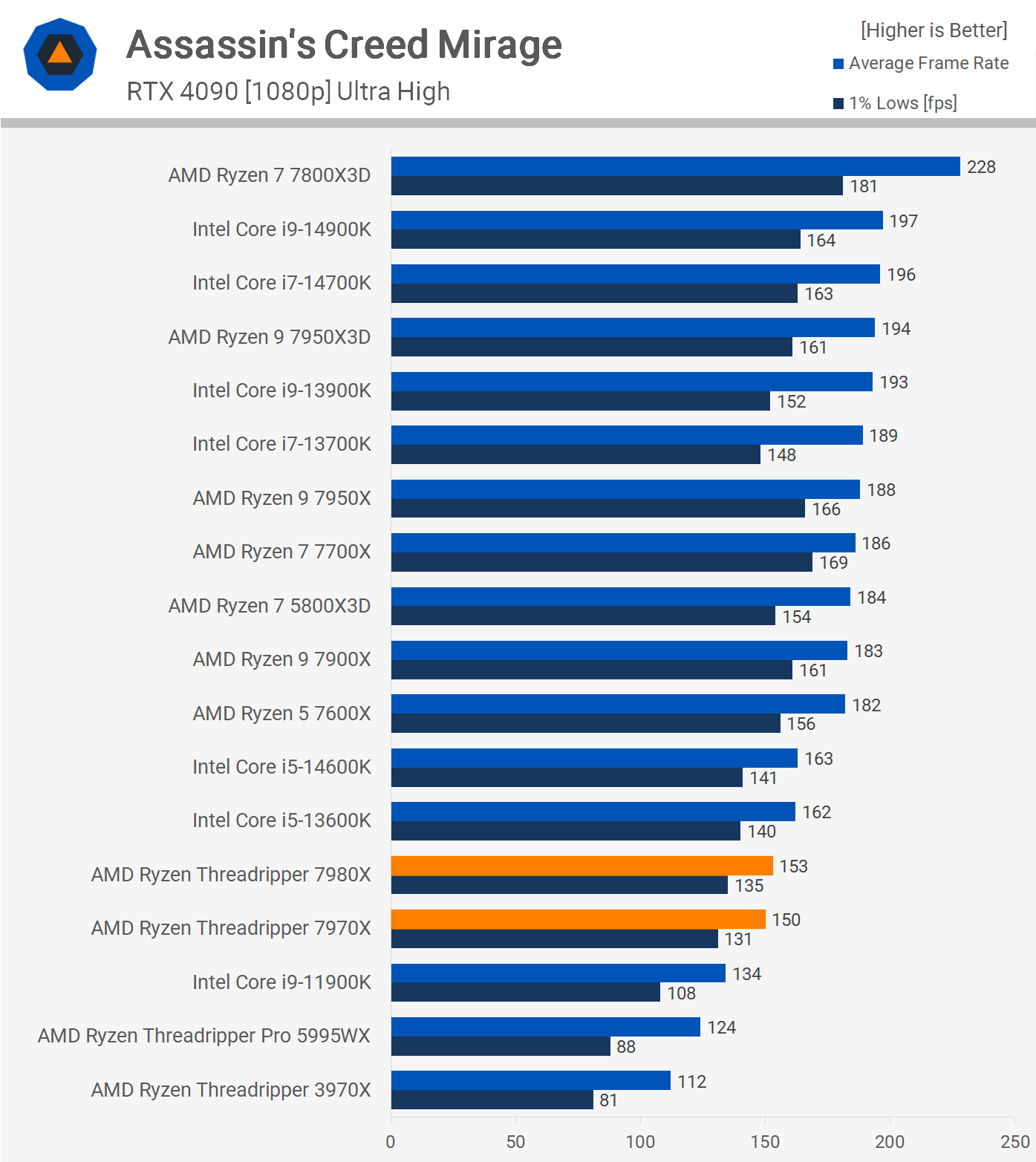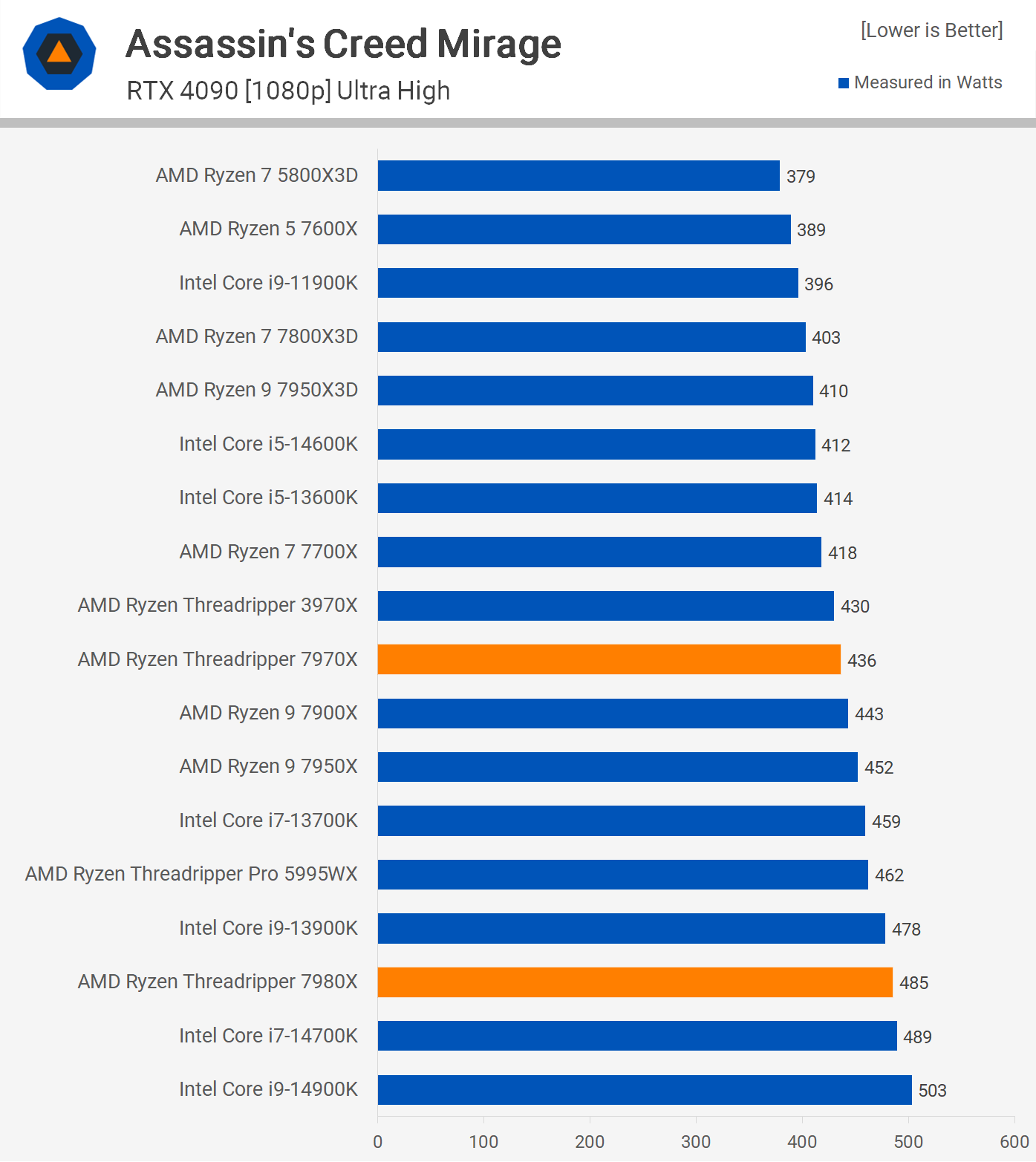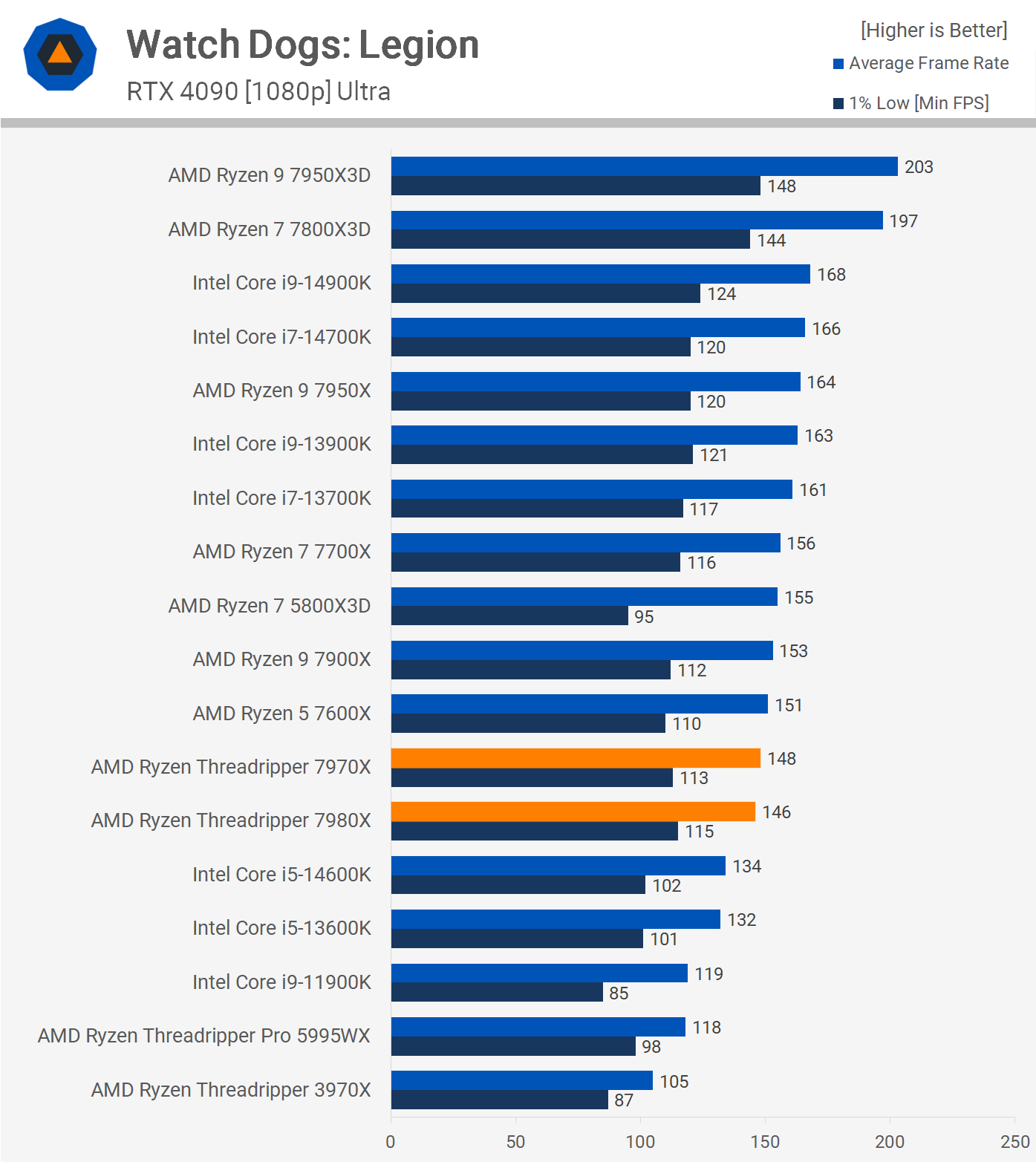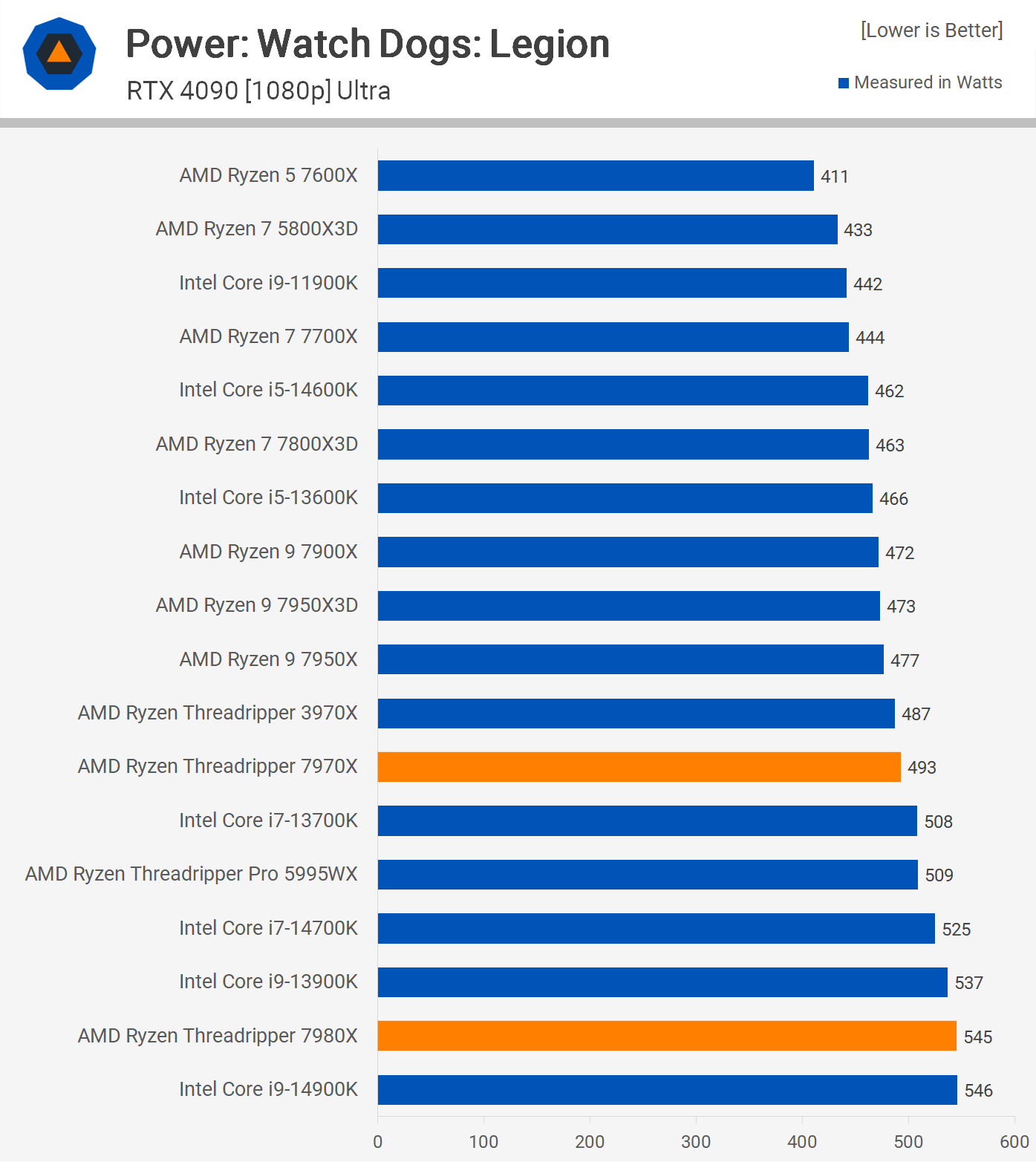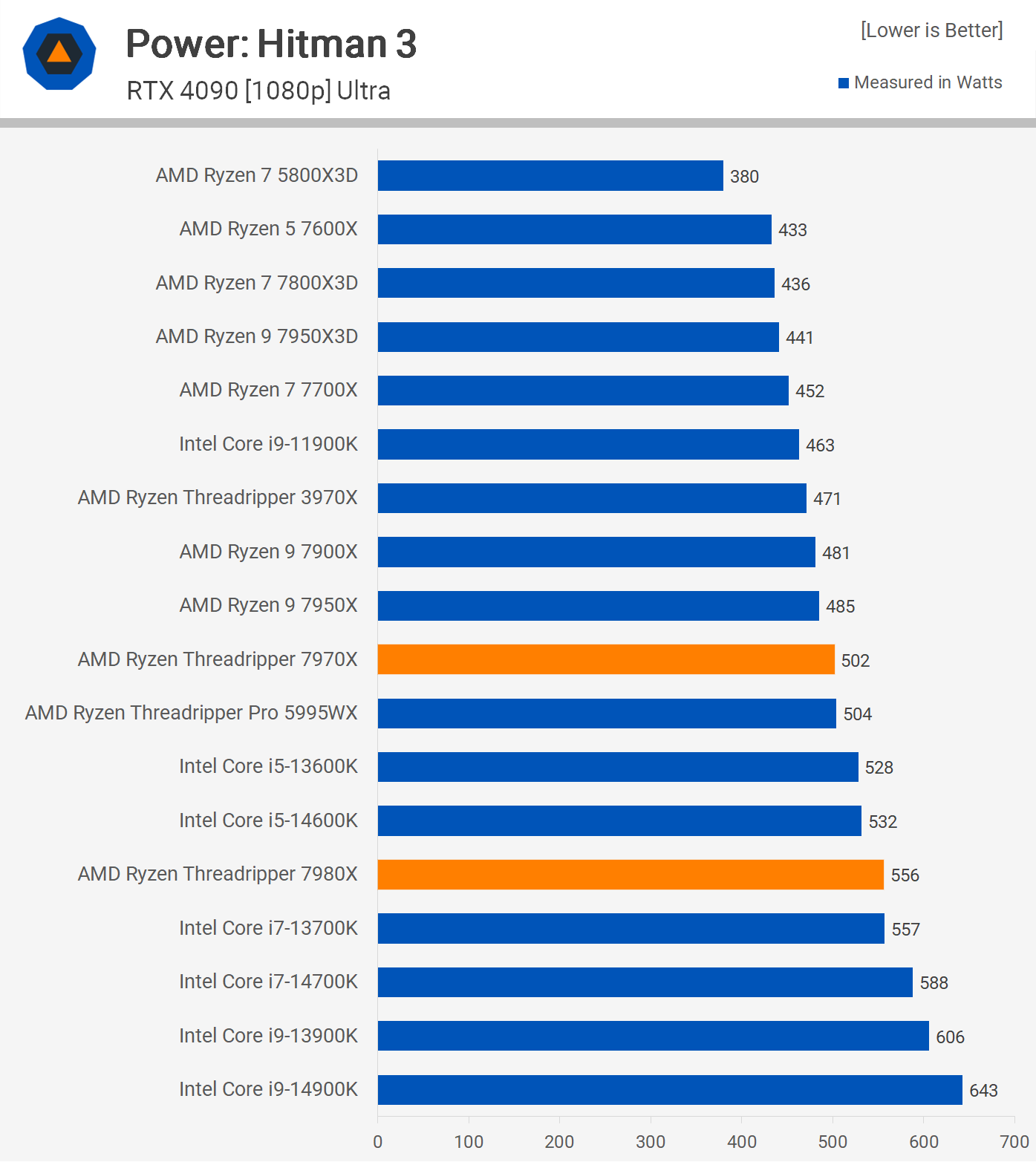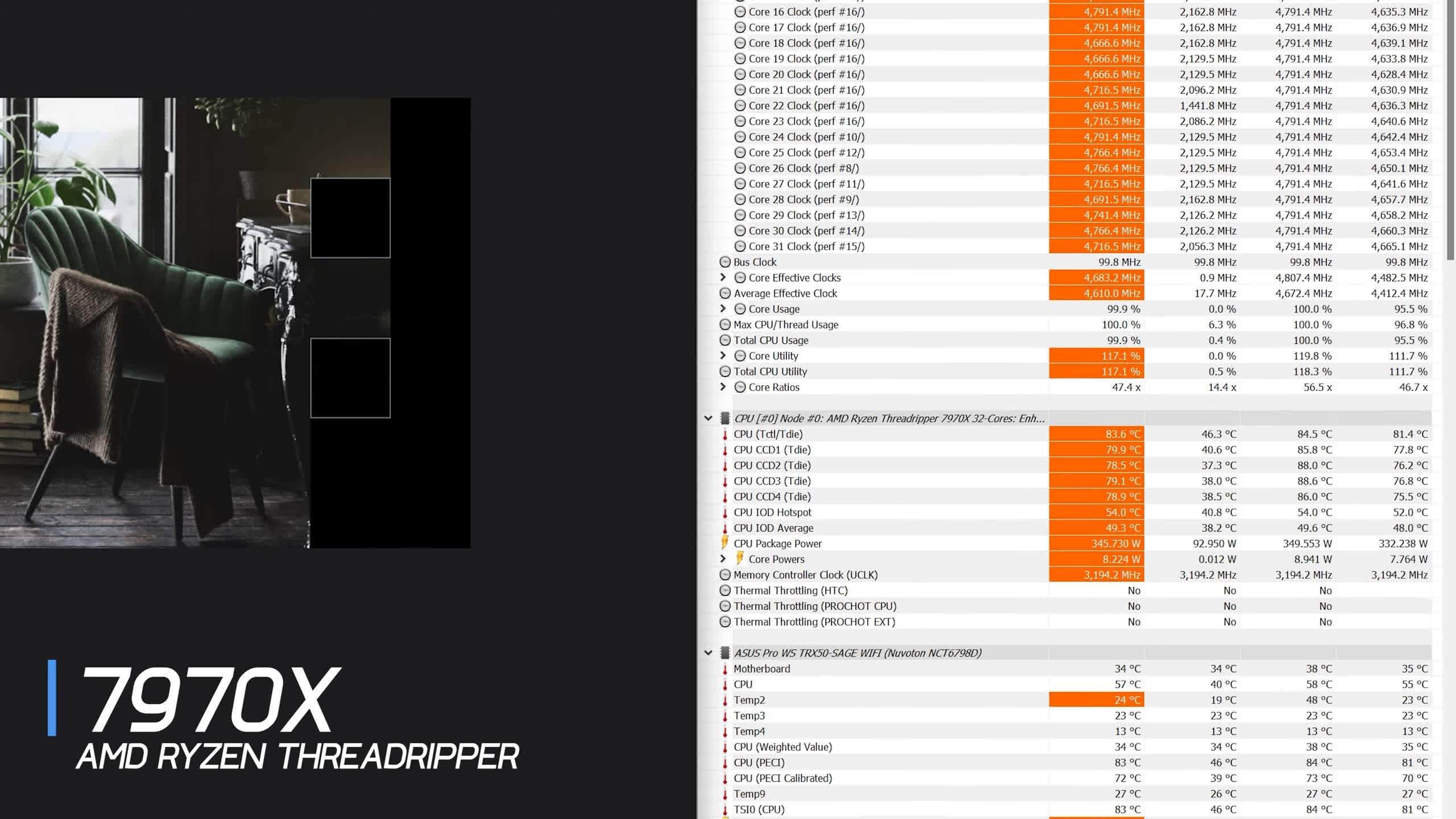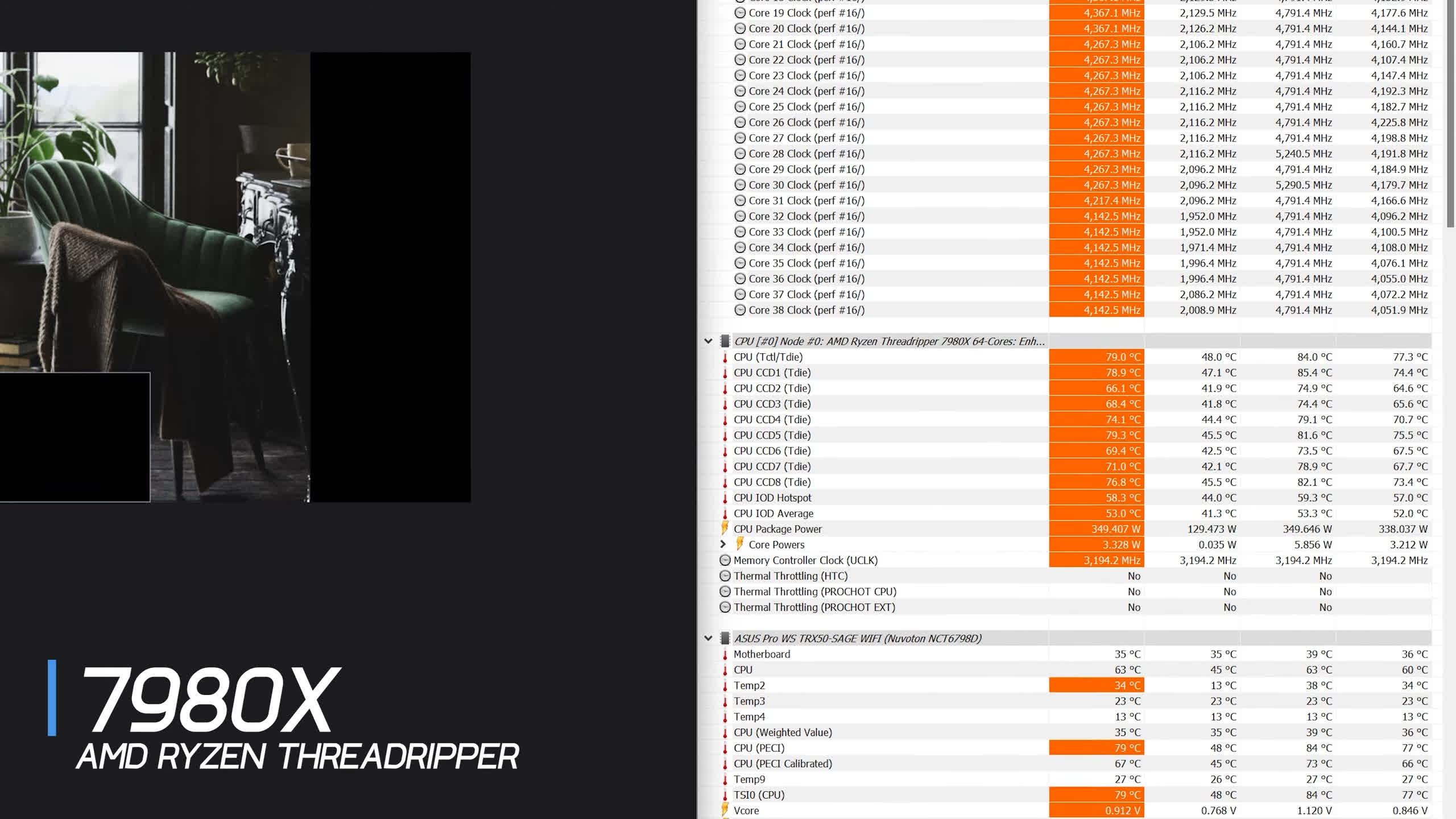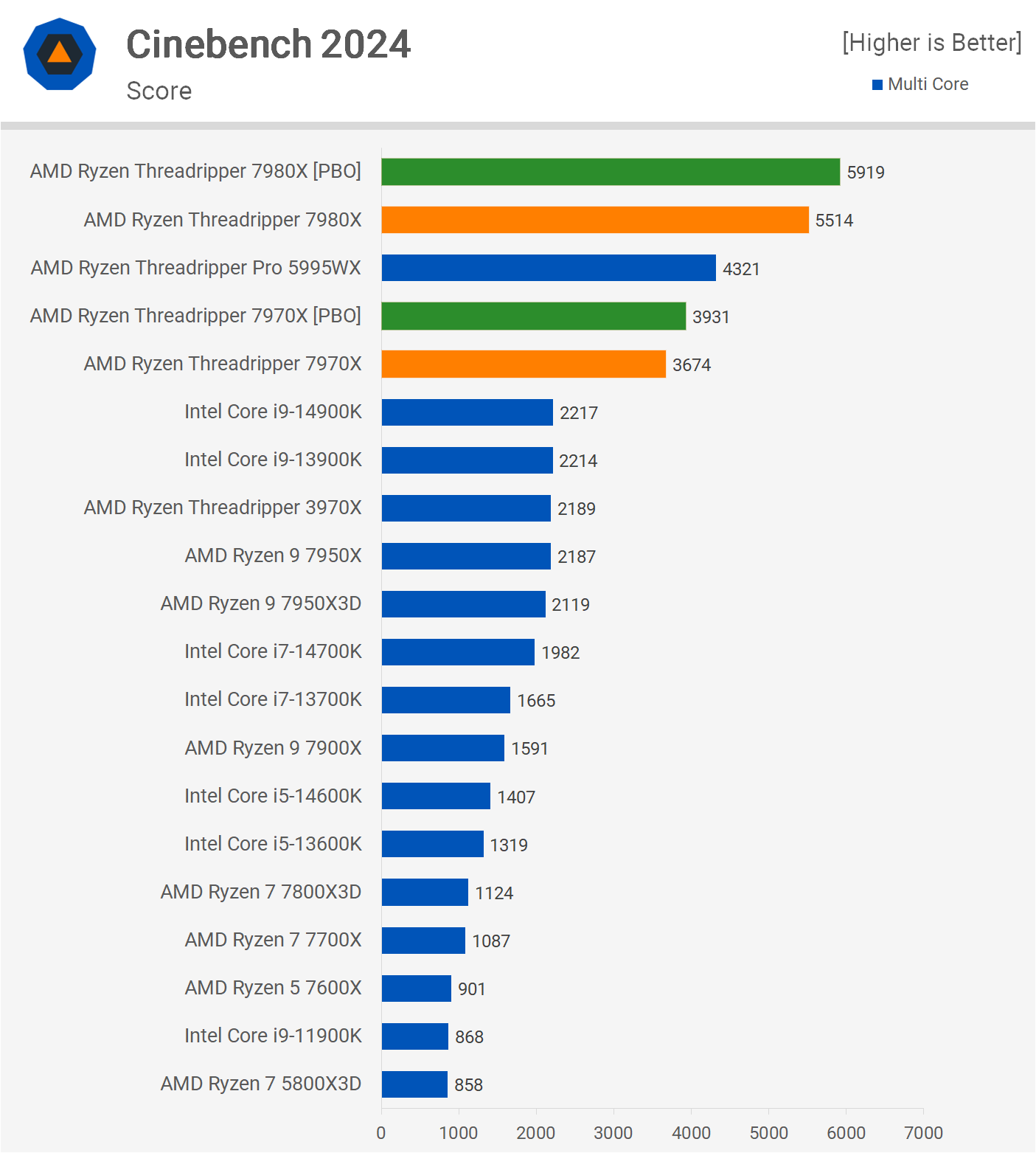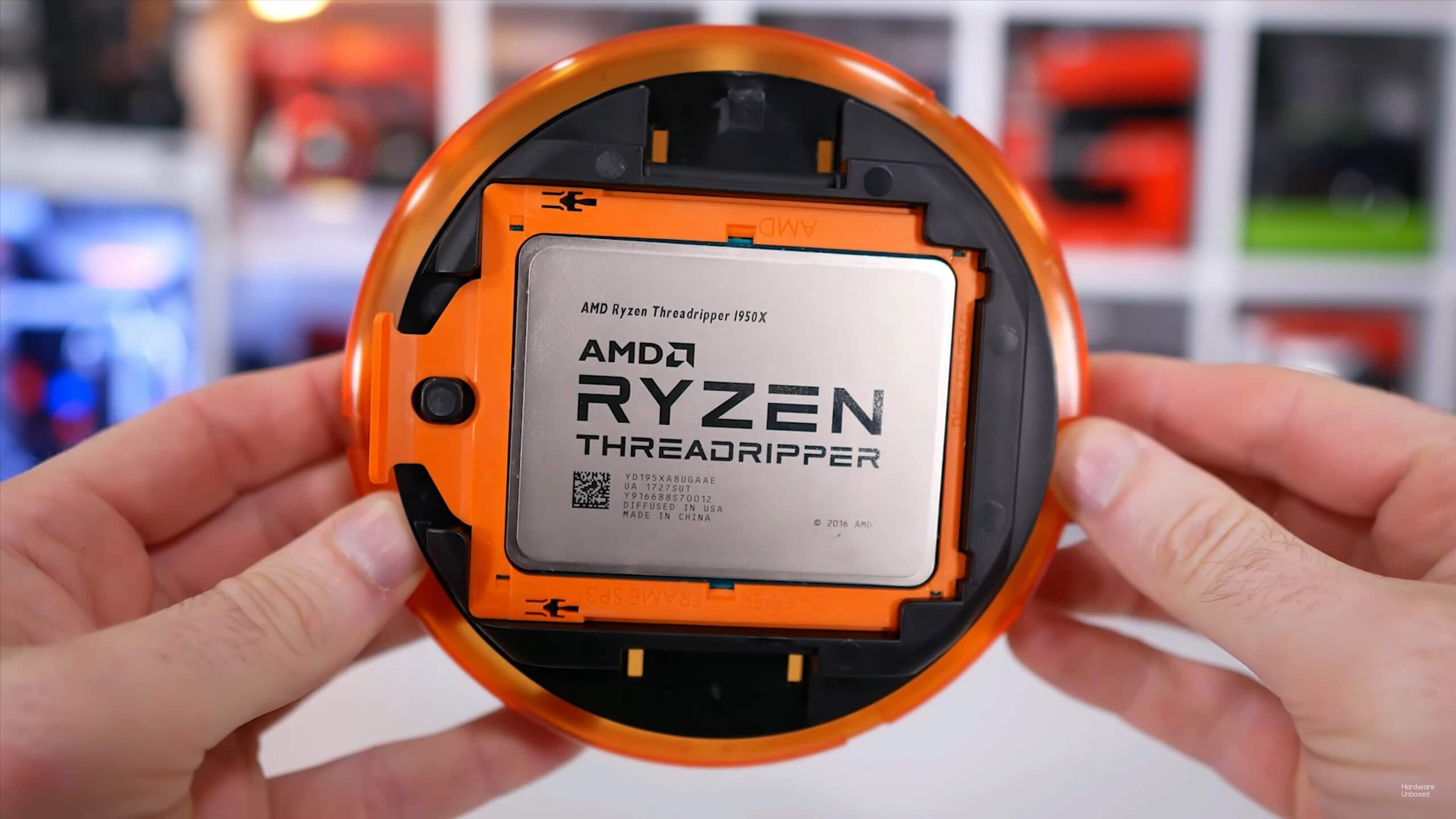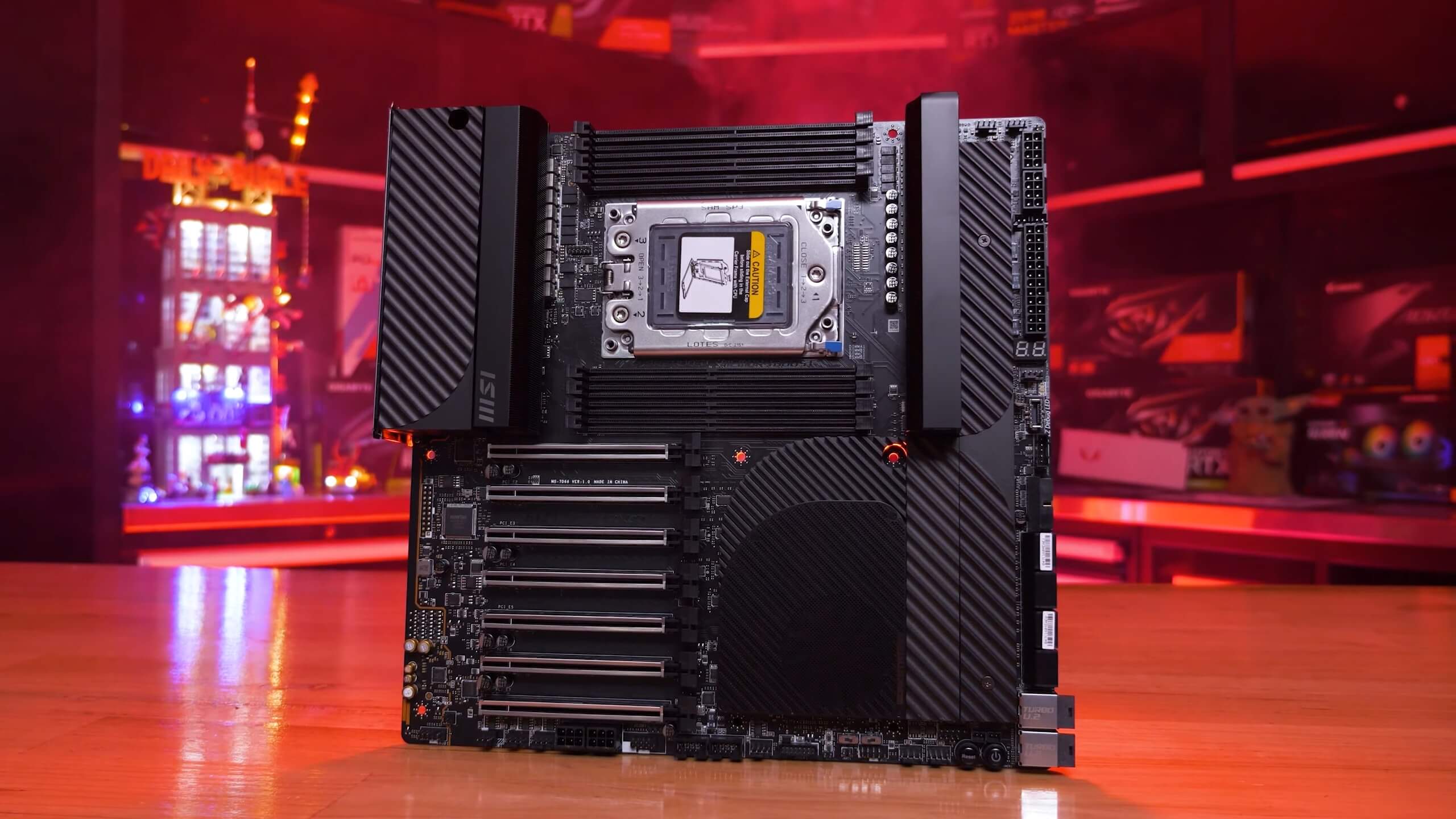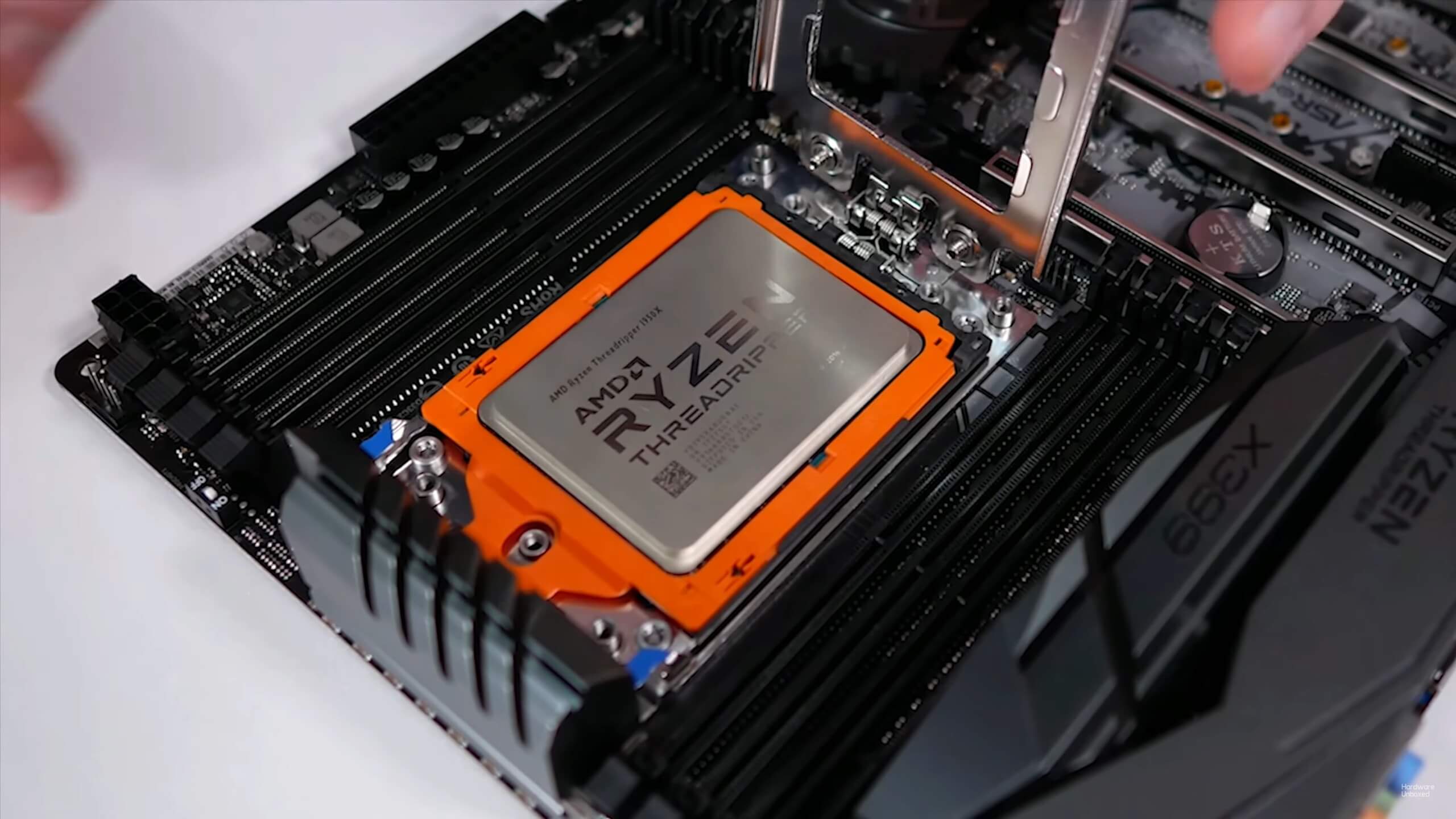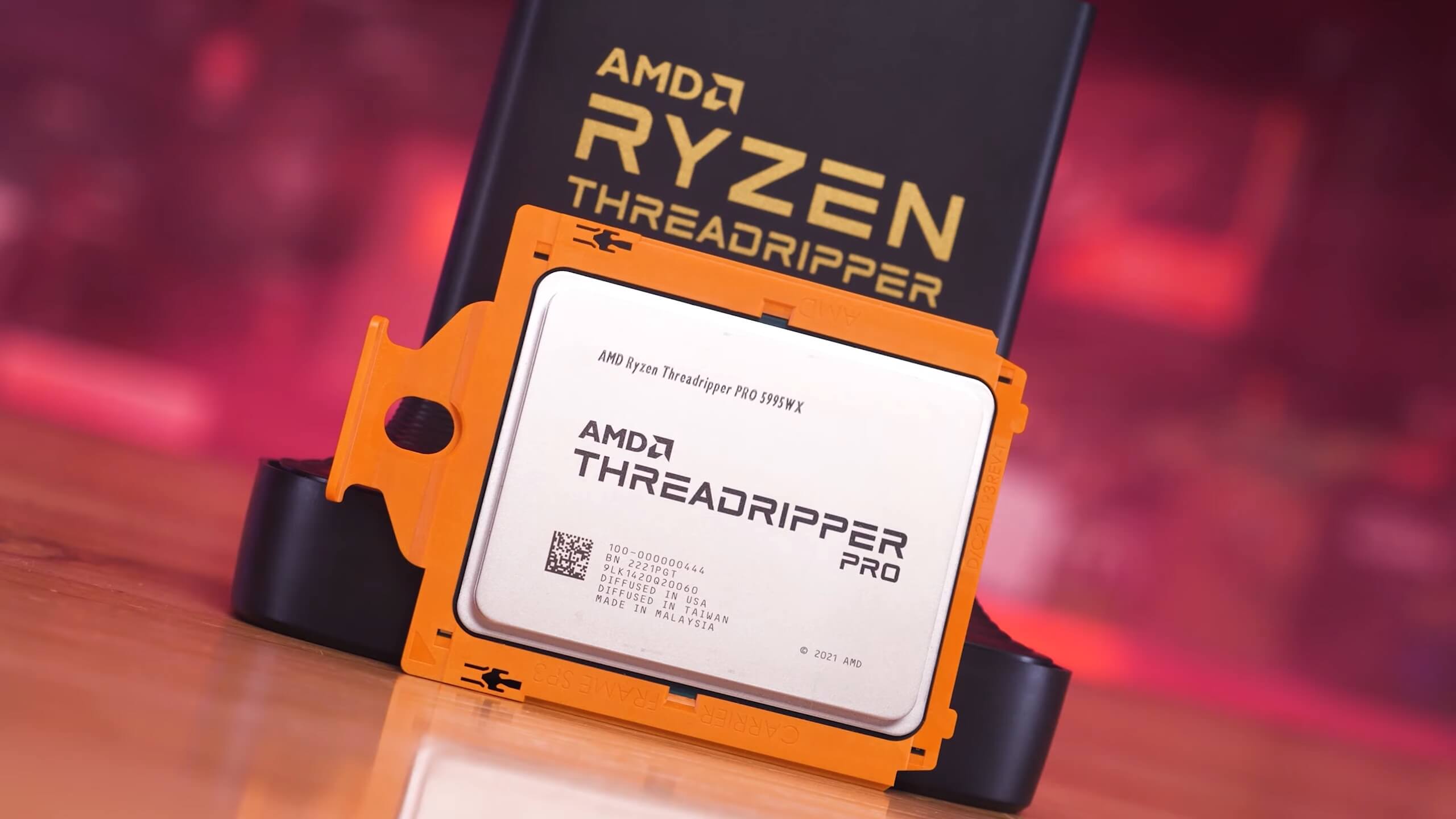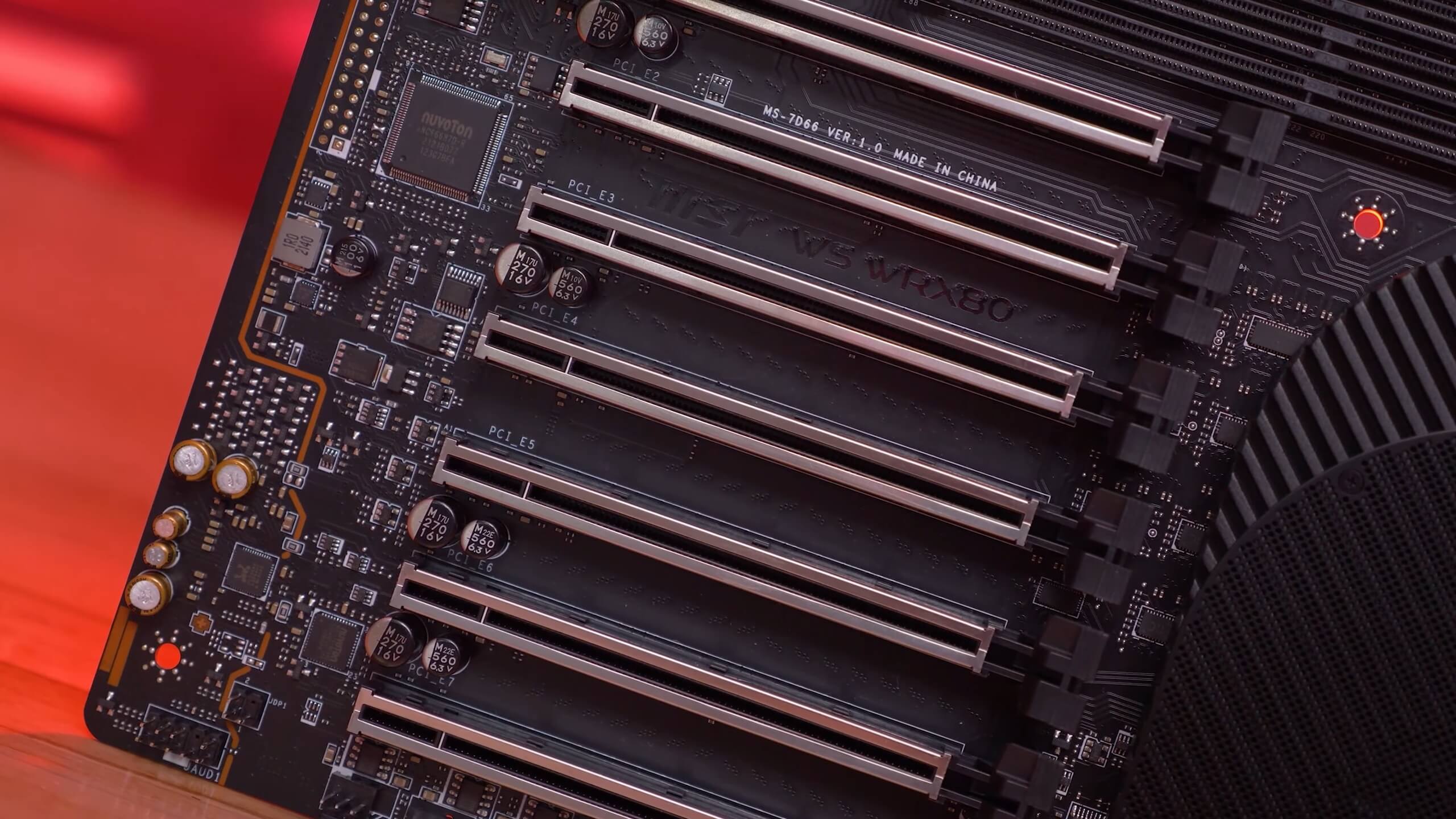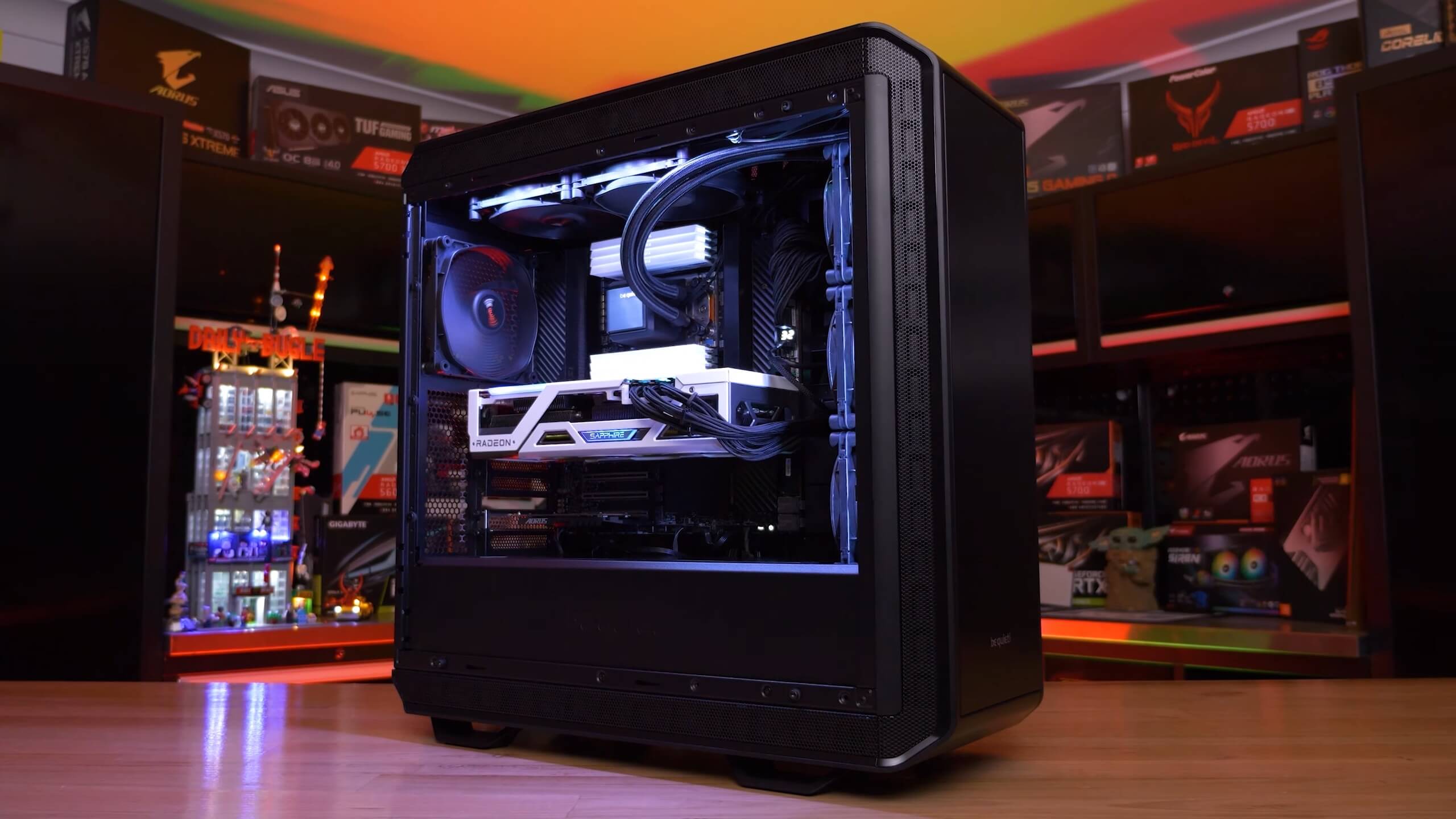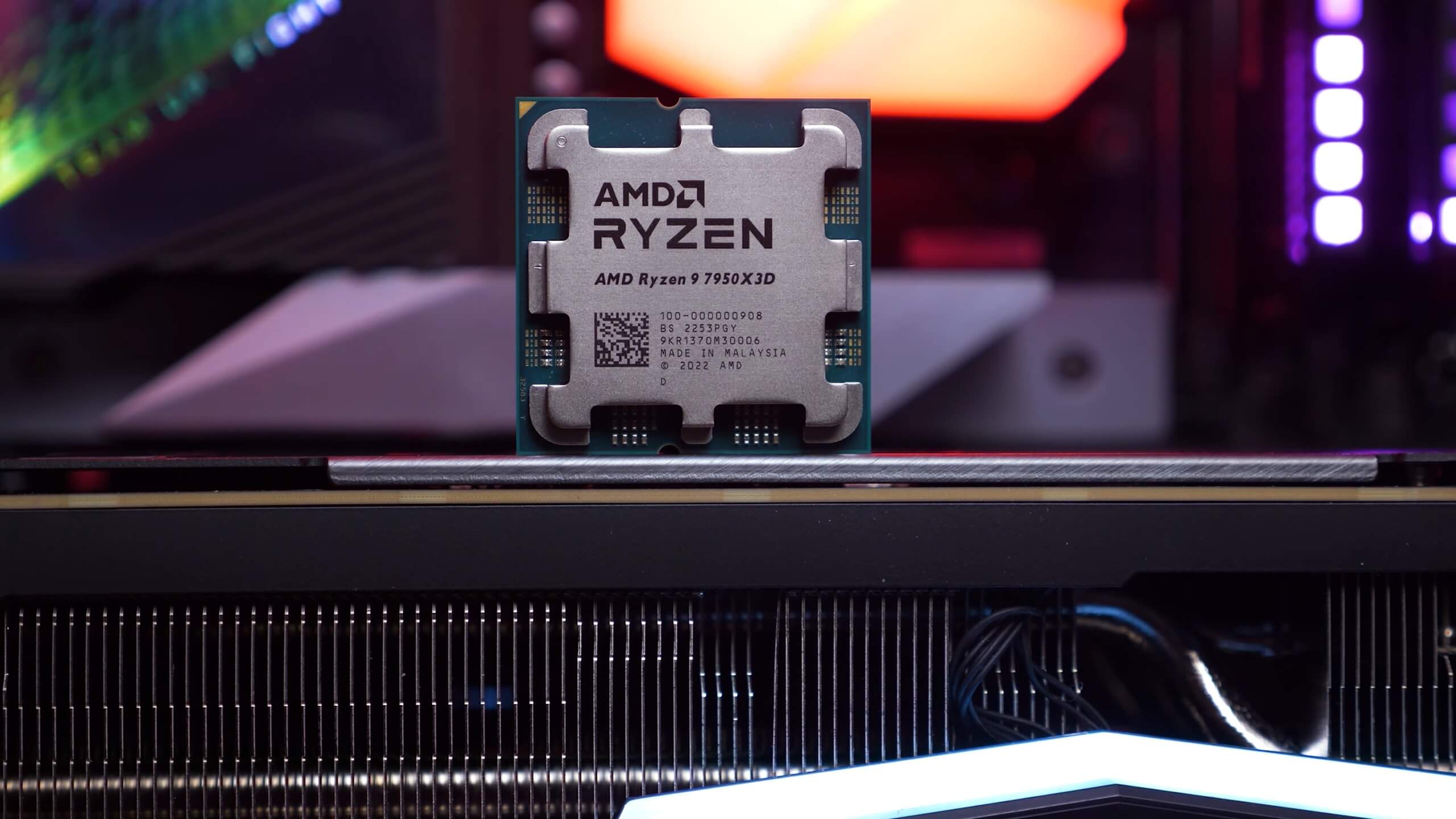It's not every day that we get to review a $5,000 CPU, but don't worry, we have a more affordable $2,500 option as well, so this should be fun.
The new Ryzen Threadripper 7980X and 7970X, pack 64 and 32 cores respectively, part of AMD's latest high-end desktop lineup, these are super powerful chips that are obviously not meant for the mainstream market. There's also the TR 7960X offering 24 cores for $1,500, but that model is not part of this review because we were unable to get one in time.
The Threadripper 7000 series is a bit more complex than previous releases as it's split into two platforms. Today we're looking at the HEDT models, but there's also the "Pro" series offering up to 96 cores, more PCIe lanes, and more memory channels, with the catch that they cost more money.
But rather than delve into all six Pro models, which we won't be testing today, we'll quickly show you the specifications while we move on to discuss the models we are testing.
| Model | MSRP | Cores/Threads | Core Config | Chiplets | Base GHz | Boost GHz | L3 Cache | PCIe 5.0 Lanes | Mem Ch | TDP |
| TR 7980X | $5,000 | 64 / 128 | 8 x 8 | 8 × CCD, 1 × I/OD | 3.2 GHz | 5.1 GHz | 256 MB | 48 | 4 | 350 W |
| TR 7970X | $2,500 | 32 / 64 | 4 x 8 | 4 × CCD, 1 × I/OD | 4.0 GHz | 5.3 GHz | 128 MB | |||
| TR 7960X | $1,500 | 24 / 48 | 4 x 6 | 4.2 GHz | ||||||
| TR Pro 7995WX | $10,000 | 96 / 192 | 12 x 8 | 12 × CCD, 1 × I/OD | 2.5 GHz | 5.1 GHz | 384 MB | 128 | 8 | 350 W |
| TR Pro 7985WX | $7,350 | 64 / 128 | 8 x 8 | 8 × CCD, 1 × I/OD | 3.2 GHz | 256 MB | ||||
| TR Pro 7975WX | $3,900 | 32 / 64 | 4 x 8 | 4 × CCD, 1 × I/OD | 4.0 GHz | 5.3 GHz | 128 MB | |||
| TR Pro 7965WX | $2,650 | 24 / 48 | 4 x 6 | 4.2 GHz | ||||||
| TR Pro 7955WX | $1,900 | 16 / 32 | 2 x 8 | 2 × CCD, 1 × I/OD | 4.5 GHz | 64 MB | ||||
| TR Pro 7945WX | $1,400 | 12 / 24 | 2 x 6 | 4.7 GHz |
It's worth noting that the Threadripper 7000 series has moved to a new 4844-pin sTR5 socket and it's not compatible with the previous 4094-pin sWRX8 platform used by the TR 5000 series. There are also two sTR5 chipsets, the WRX90 and TRX50, the WRX90 supports the Pro CPUs and the Pro CPUs only, while the TRX50 chipset supports both Pro and HEDT parts.
As mentioned before, the key difference is the PCIe lane count and memory channels. If you use a Pro CPU on a WRX90 board you will have 144 usable PCIe lanes and octa memory support. But if you install a Pro CPU on a TRX50 board, you will be limited to 88 usable PCIe lanes and quad-channel memory.
Speaking of memory, Threadripper 7000 processors can accommodate up to 8 channel/2TB of memory on WRX90 motherboards using 256GB DIMMs, or up to 4 channel/1TB of memory on TRX50 boards. Both platforms officially support DDR5-5200 in single or dual rank configurations.
Though it's not your typical DDR5 memory, both platforms use registered DIMMs, so you will require DDR5 RDIMM, LRDIMM or 3DS RDIMM. Also, RDIMMs are not compatible with conventional unbuffered or unregistered memory – the sort of memory used by AM5 processors, for example.
For testing, AMD provided a 128GB kit of G.Skill's Zeta R5 Neo DDR5-6400 RDIMM memory. These are 32GB modules and while we don't have exact pricing for them, they're going to be very expensive as the 8-stick 128GB kit costs ~$1,000.
Realistically, for now you'll likely only be using up to 256GB of memory with one of these Threadripper HEDT parts on a TRX50 motherboard given all currently available models only offer four DIMMs, and 128GB registered DDR5 modules are quite expensive at around $1,000 for DDR5-4800 spec kits. But if you want a 512GB kit you'll be looking at over $5,000 right now, so good luck with that.
The Threadripper 7980X comes in at $5,000, offers 64-cores/128-threads using eight CCD's and a single I/OD. In total, there's 256 MB of L3 Cache, 48 PCIe 5.0 lanes, and four memory channels. The cores run at a base clock of 3.2 GHz with a 5.1 GHz boost clock, and like all Threadripper 7000 series parts, the TDP is set to 350 watts.
The Threadripper 7970X is essentially cut in half, with just four CCD's giving it 32-cores/64-threads and 128MB of L3 cache, and the price has been cut in half, too, at $2,500. Because the TDP remains the same at 350 watts, the base clocks have been dramatically increased to 4 GHz, and we even see a slight increase to the boost clock hitting 5.3 GHz.
For testing we're using the Asus Pro WS TRX50-Sage WiFi, 128GB of DDR5-6400 CL32 memory and the GeForce RTX 4090. AMD also provided the NZXT Kraken 360 for cooling, but failed to include the mounting gear in the box, so at the last minute we had to get our hands on something else for testing, and that something was the DeepCool LT520, a 240mm AIO. We tested using the latest build of Windows 11, with all drivers up to date, so let's get into it…
Productivity Benchmarks
Starting with the Cinebench multi-core test, we find that the 7980X is 28% faster than its predecessor, the 5995WX. Meanwhile, the 7970X was just 15% slower, which is notable considering it has half as many cores. Compared to the 3970X, a 32-core part using Zen 2 cores, it was an impressive 67% faster.
Sadly, we don't have any competing Intel workstation processors for comparison, though it's our understanding that the latest 56-core flagship Xeon model performs similarly to the 5995WX in this test.
What's really impressive here is that for roughly the same power usage, the 7980X was 150% faster than the 14900K.
Where the Threadripper CPUs aren't all that impressive is single-core performance. Obviously, 32 and 64-core processors aren't going to excel here when compared to higher-clocked mainstream desktop parts. Still, the 7970X was 36% faster than the 5995WX in this area, and the 7980X was 32% faster. So, the Zen 4 based Threadripper CPUs are much faster than the older Zen 3 model, a significant improvement of over 30%.
The Blender Open Data results are similar to what we observed in the Cinebench multi-core test. The 7980X is 41% faster than the 5995WX, a highly impressive result. It also meant that the 7970X was just 13% slower than the previous generation 64-core part.
In the 7-zip compression test, the 7980X was almost 40% faster than the 5995WX, another notable result. In fact, even the 7970X outperformed the 5995WX, besting it by a 7% margin, which meant the 7980X was just 30% faster than the 32-core model.
The 7-zip decompression performance is even more striking with AMD's new 64-core HEDT part. Here, the 7980X was 62% faster than the 7970X and 45% faster than the 5995WX.
In applications like Adobe After Effects, which are more lightly threaded, the core-heavy Threadripper CPUs aren't as remarkable, although their performance is far from weak. It's just not representative of their full potential as much of the CPU goes unused. However, compared to the 5995WX, we're looking at around a 15% performance increase with these newer models.
Photoshop struggles more with utilizing core-heavy CPUs. It primarily taxes a single core, so the Threadripper parts don't score particularly well here and don't justify their price for most users. Essentially, if you're primarily using lightly threaded applications, a new Threadripper CPU wouldn't be a practical choice.
Premiere is a bit more core-heavy, though it heavily depends on the workload. In the Puget systems benchmark, for general editing, the 7980X and 7970X perform better than standard desktop Zen 4 parts, but not by a significant margin.
The last application test is a browser benchmark, which is more indicative of general usage. In this test, these new Threadripper parts are comparable to standard desktop processors, because web browsing is a lightly threaded task.
Gaming Benchmarks
Time for a brief look at some gaming performance, which really isn't the focus of these Threadripper parts, but hey, maybe you also want to game on your workstation PC.
We'll start with Baldur's Gate 3. Both Threadripper 7000 series parts are slightly slower than the slowest AM5 Zen 4 processor, the Ryzen 5 7600X, so we're certainly looking at highly playable performance, but it's not on par with the 14900K or 3D V-Cache.
Given the number of cores these parts pack, the total system consumption when playing Baldur's Gate 3 is quite impressive. However, efficiency isn't amazing, given that we were looking at comparable performance to the 7600X, for a 22% increase in total system usage.
The Threadripper performance in Cyberpunk 2077: Phantom Liberty wasn't great. Sure, it was highly playable, but with just 120 fps on average, they were about 14% slower than the 7600X. Still, the 7980X was 23% faster than the 5995WX, so that's a notable improvement.
Something we should mention is that Zen 4 cores are memory sensitive. The AM5 processors are using low latency DDR5-6000 CL30 memory, whereas the Threadripper 7000 series has to use RDIMM's. AMD provided DDR5-6400 CL32 memory, which runs at more relaxed secondary and tertiary timings, and this will negatively impact fps performance in certain titles.
Again, power consumption isn't bad, despite the somewhat weak fps performance. When compared to Intel Core i7 and Core i9 parts, these 32 and 64-core monsters don't look outrageous.
Spider-Man Remastered plays really well on the 7970X and 7980X, both delivering around 7700X/7600X levels of performance. The 7980X was 14% faster than the 5995WX, so a nice little boost there.
That said, you do pay for that performance in the form of power usage, as the 7980X managed to out power even the 14900K, and that's no easy feat, even for a 64-core processor.
Next, we have Assassin's Creed Mirage, and here performance is much lower than you might expect. The 7980X came in 16% slower than the 7600X, though it was 23% faster than the 5995WX, so by Threadripper standards, that's a good result.
Again, power efficiency when gaming is quite poor, with the 7980X pushing total system usage almost as high as the 14900K, despite being 22% slower.
The Watch Dogs: Legion performance is more what you'd expect based on the 7600X result. Essentially, we're looking at Zen 4 Ryzen 5 performance with 146 - 148 fps on average, which is a 24% improvement over the older 5995WX.
Unfortunately, when compared to the 7600X, total system consumption has increased by 33%, so the 7980X isn't the most efficient gaming processor. But then, it's not a gaming processor at all, so probably not a big deal.
Finally, we have Hitman 3, and again, the 7980X and 7970X can't even match the 7600X, trailing by a 10% margin. This is almost certainly down to the difference in memory used between the Threadripper and AM5 processors. However, it's not an issue as Threadripper isn't designed for gaming; rather, these are core-heavy productivity processors. But as we said, some will want to know how well they can game on their workstation.
Lastly, here's a look at total system power usage when playing Hitman 3. As you can see, 32-core and 64-core processors aren't the most efficient for gaming, who knew.
Operating Temperatures
Let's now take a look at operating temperatures using the DeepCool LT520, a 240mm all-in-one liquid cooler. Starting with the 7970X, running an all-core workload in Cinebench, after an hour the system hit a peak hotspot temperature of 88c on the cores and sustained a core clock frequency of 4.6 GHz, a great result using a modest cooler.
Installing the 7980X we ran the same test and found an average clock frequency of 4.1 GHz with a peak hotspot temperature of just 85c. Another great result, which means keeping these new 32 and 64-core Threadripper CPUs cool is a relatively easy task.
Overclocking
Because these processors are unlocked, we're just going to enable PBO via Ryzen Master to see what that does. Both CPUs saw around a 7% performance boost in Cinebench with PBO enabled, so that's pretty good, though it's far from free performance.
With the 7980X total system power usage increased by 26% and we saw a 19% increase with the 7970X, so we can't say we recommend overclocking these workstation processors.
Issues with Threadripper 5000
Something we wanted to discuss in this review is our experience with the Threadripper 5000, specifically the 5995WX, which, sadly, wasn't very good, but let us explain. We've been using Threadripper CPUs in our main PCs for years now, in fact, it all started with the 1950X, which at the time was a godsend for editing videos. That CPU was quickly replaced with the 2950X, which we were even more impressed with. It offered slightly better performance while addressing the weak memory support of the 1950X. Best of all, it was supported on the same X399 motherboards, making for a quick, easy, and cost-effective upgrade.
We skipped the 24 and 32-core models of the Threadripper 2000 series, as the janky four CCD design didn't work very well, leaving us unimpressed with the 2970WX or 2990WX.
After that, Tim and I migrated to the 3970X for our editing PCs, and again, the experience was excellent. However, we were disappointed that AMD dropped compatibility with this series, essentially alienating Threadripper 1000 and 2000 series customers by moving the 3000 series to the TRX40 chipset. It gets even worse because the 3000 series were the only CPUs compatible with TRX40 boards. Still, it was nice to finally move to 32 cores without dealing with janky core configurations. The 3000 series also offered a 64-core model, but at $4,000 each, we weren't able to get those for our editing PCs.
Then there was the Threadripper 5000 series, the Zen 3-based models, which once again required a new motherboard. So, if you invested significantly in a TRX40 board, you needed to do it all over again with a WRX80 board to support the 5000 series processors.
Still, when we first got our hands on the 5995WX, we were blown away by the performance. Surely, it costs $6,500, but for work, the 64-core monster seemed worth it, or at least so we thought.
We'll try to make this brief as the story spans over 12 months of troubleshooting. Initially, all went well; we were using the MSI WS WRX80 motherboard, the same one we used to review the 5995WX. For roughly six months, everything was ideal, and it was a dream to edit our videos with encoding performance that was blisteringly fast. But then, things started to go awry.
At first, it was just small but very annoying issues. The chipset fan would constantly ramp up to maximum speed, and there was no way to adjust it. So, we removed it and installed a new fan that we could control via an onboard fan header. Then, the VRM fans started randomly spinning up to maximum speed, which was very unpleasant, and again, there was no fix, so we removed them.
At that point, MSI swapped the board out for a new model. Quite bizarrely, that board wouldn't, and still doesn't to this day, POST using a GeForce GPU. This forced us to use Radeon, which was fine as we were using a 6900 XT anyway. However, it became an issue later when we started troubleshooting performance-related issues.
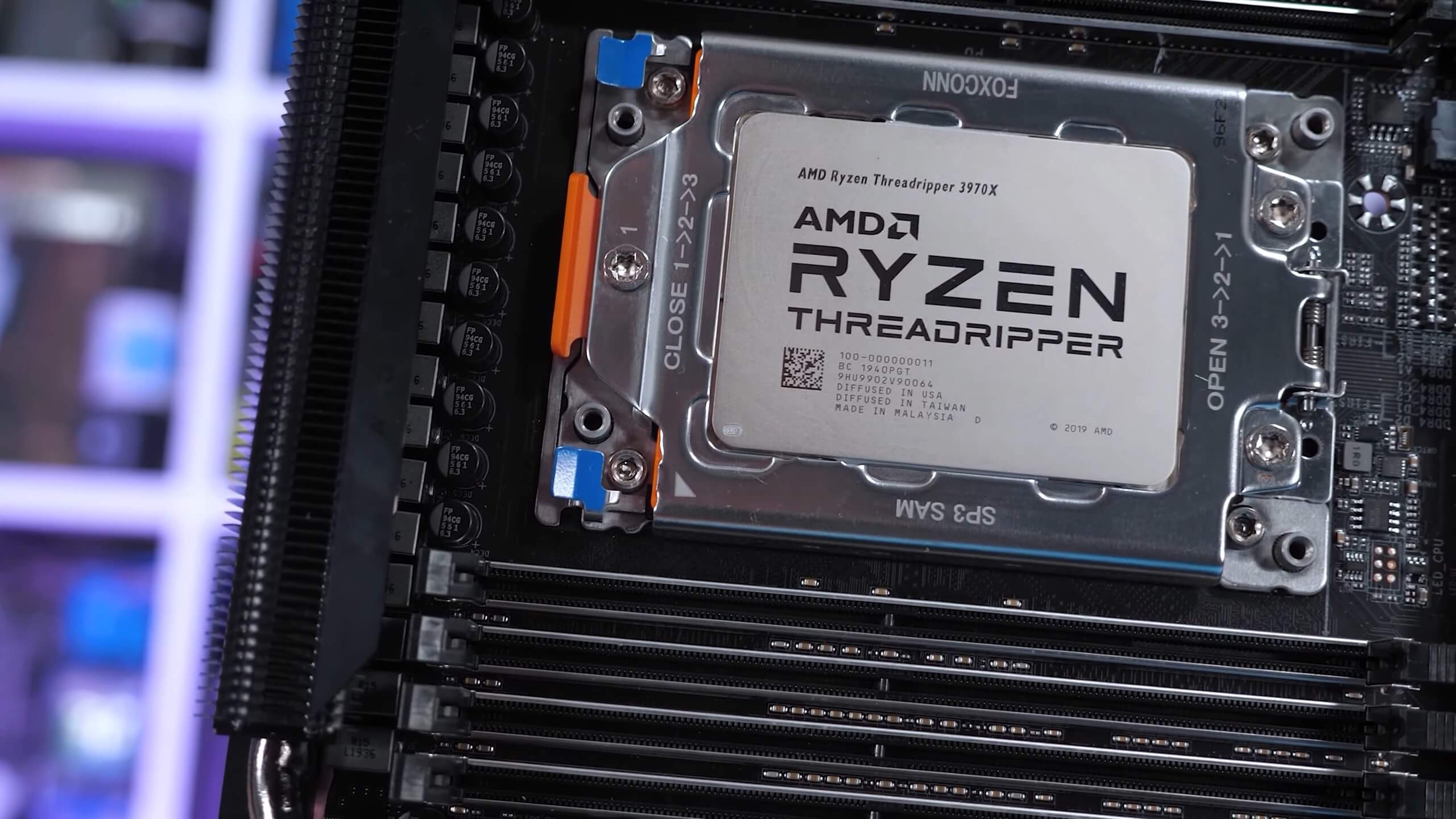
Before long, the fans were the least of our worries. The system started randomly crashing when using Premiere, which we initially chalked up to an Adobe-related issue. However, we found that our older 3970X system, which we still had, was working just fine. We also noticed that the 5995WX was never as fast as when we first reviewed it, and after several fresh Windows installs and much head-scratching, we never worked it out.
At the same time, we were working with both AMD and MSI to solve the various issues we were having, but no real progress was being made. We couldn't figure out why MSI had not issued a single BIOS release since announcing their WS WRX80 motherboard. After quizzing our local contact, we learned that the WS WRX80 never entered production. Apparently, demand was so low that MSI never bothered to make the board, beyond the handful of samples that were sent out to the media. We only learned this about a year after using the board and trying to understand why none of the issues had been addressed. So, having learned that we were using an unsupported product, AMD agreed to swap out the 5995WX for a brand-new one in case there was an issue with our CPU. We got Asus to provide their WRX80E-Sage SE WiFi, a WRX80 motherboard that was actually being manufactured and sold.
To make a long story short, we got the new CPU and motherboard, installed them into our workstation, set it all up, and things seemed good, though never as good as the 5995WX originally was. Performance was inconsistent; sometimes encoding videos really quickly, while other times taking several times longer than it should. Despite never crashing, it just didn't seem right.
In the end, we had to give up on the 5995WX build; it was a huge disappointment. The solution was to build two 7950X3D workstations, one for me and one for our video editor. We've been using them for almost a year now, and the experience has been flawless.
We will move over to the 7980X and see how that goes. However, this has caused us to have some reservations regarding AMD's Threadripper platform, especially if we were paying customers. That said, this is by no means an AMD-only problem. It's more of an HEDT issue. Simply put, not enough people buy pro-grade hardware, and therefore support can be lacking, especially when compared to mainstream products.
Years ago, we used Intel HEDT processors, and it was often a bit of a mess, with issues like USB problems and more serious issues like crashing. That said, the 5995WX experience has been one of our worst, if not the worst, to date.
What We Learned
Our biggest issue with Threadripper 7000 so far is the limited compatibility. Of course, with Zen 4 we are moving to DDR5, so it makes sense that there would be no backwards compatibility, or that you can't use the 7980X on a WRX80 motherboard.
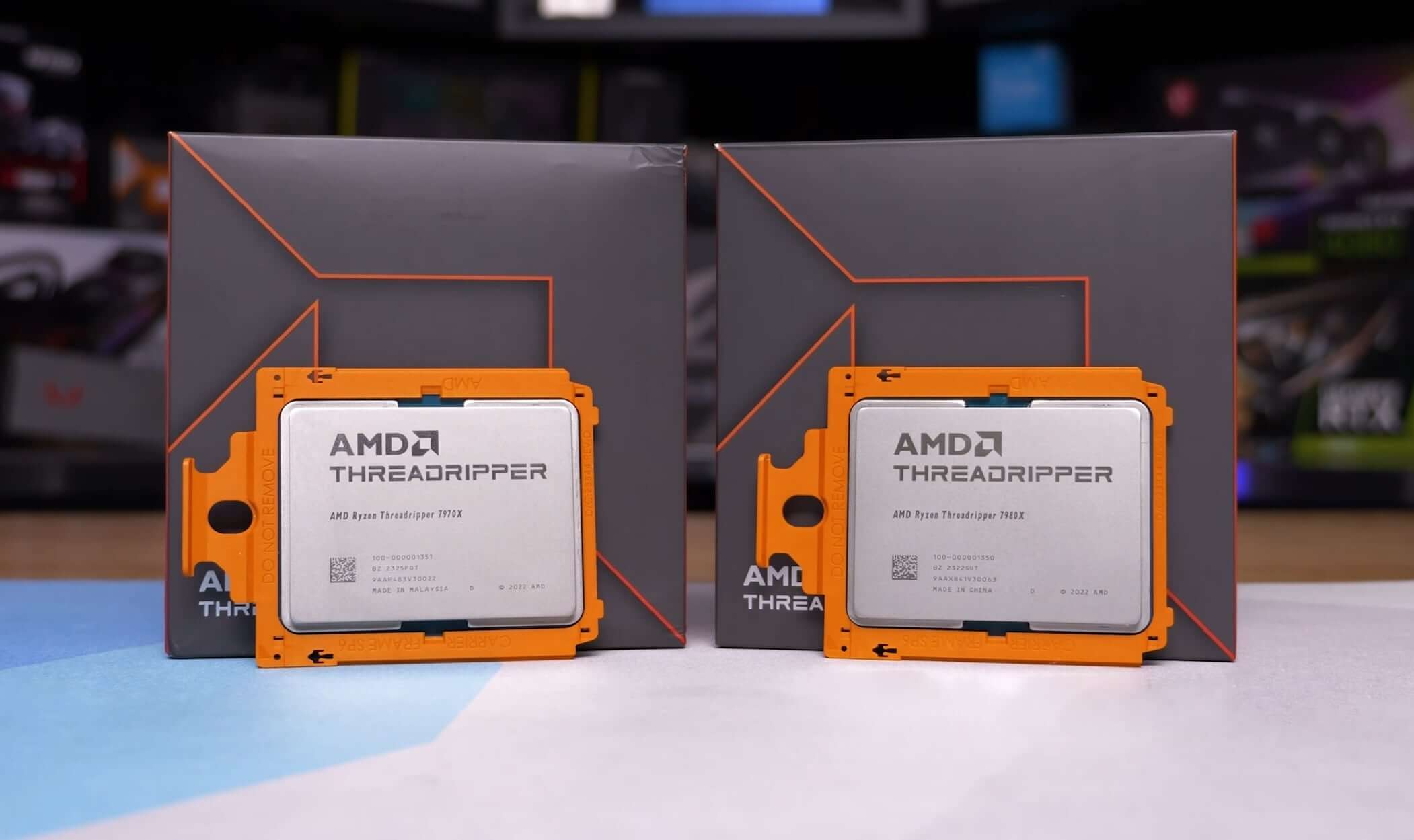
Rather our concern is for future Threadripper releases. We don't expect that the TR 8000 series will work on TRX50 boards either, and AMD certainly hasn't made any such claims – so be aware of that. As much as we hate the mess around Threadripper compatibility, this is clearly less of an enthusiast platform as it used to once be, and even the non-Pro models are serious workstation CPUs.
With mainstream parts such as the Ryzen 9 7950X now offering 16 cores and 32 threads for under $600, there was no chance it wasn't going to head in this direction. Truth be told, modern Ryzen 9 and Core i9 processors are more than powerful enough for most tasks and for most users, even for 4K video editing, leaving Threadripper as more of a specialty item.
As a side note, the Intel competition to a part like the Threadripper 7980X would be the Xeon W9-3495X, a CPU we can't get our hands on, though it does cost a cool $6,700 at retail. It's a 56-core processor that scores around 64500 pts in the Cinebench R23 test, or slightly less than that of the older 5995WX, making the new 7980X almost 50% faster in that test.
That being the case, these new Threadripper 7000 processors have no direct competition. If you are in need of a core-heavy processor or require tons of PCIe lanes, there's no better alternative than this.
Finally, we plan to replace one of our Ryzen 9 7950X3D editing PCs with the TR 7980X, planning to use that daily, and we'll keep you in the loop about how that works out. Fingers crossed it's closer to our TR 3970X experience.
